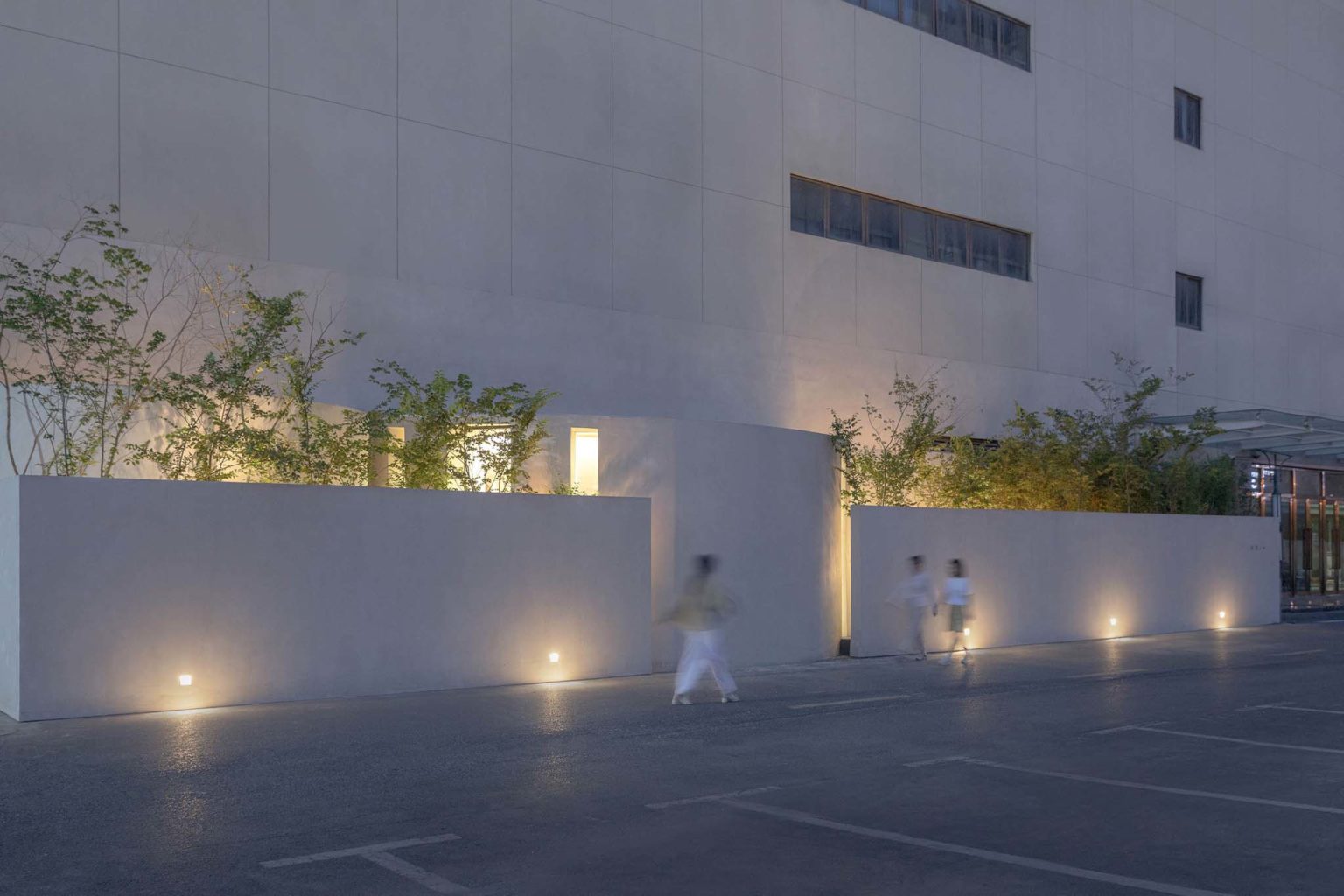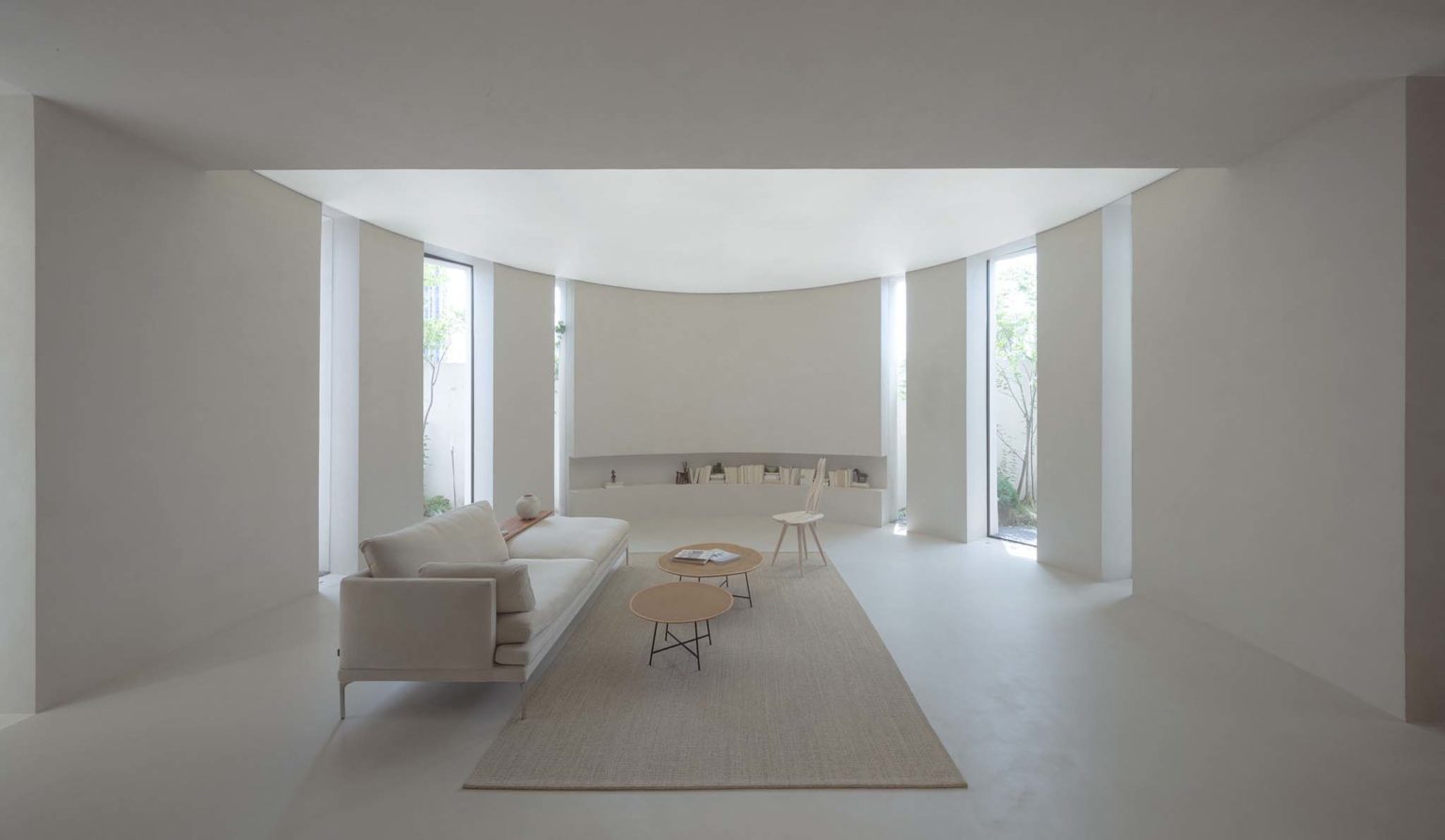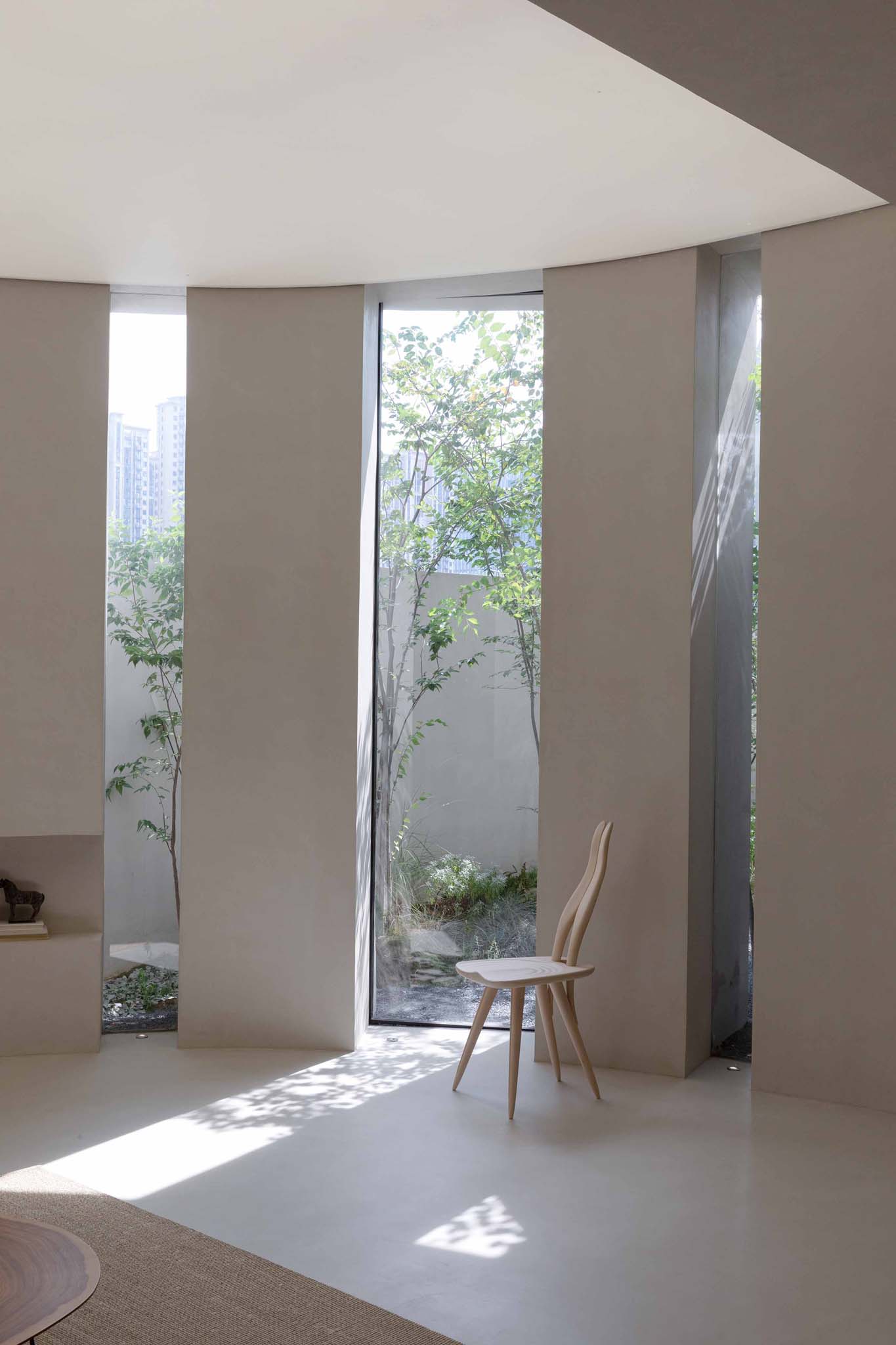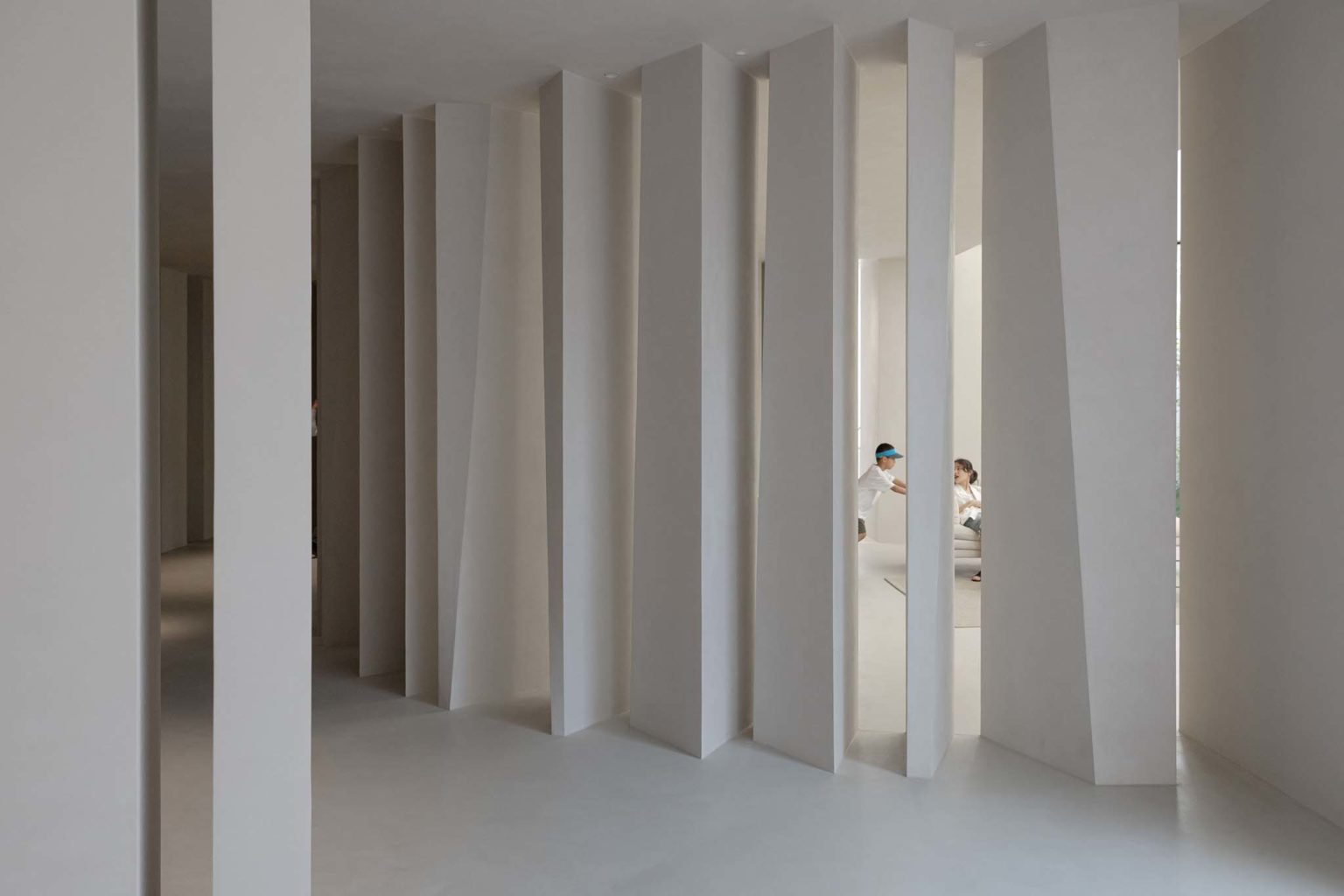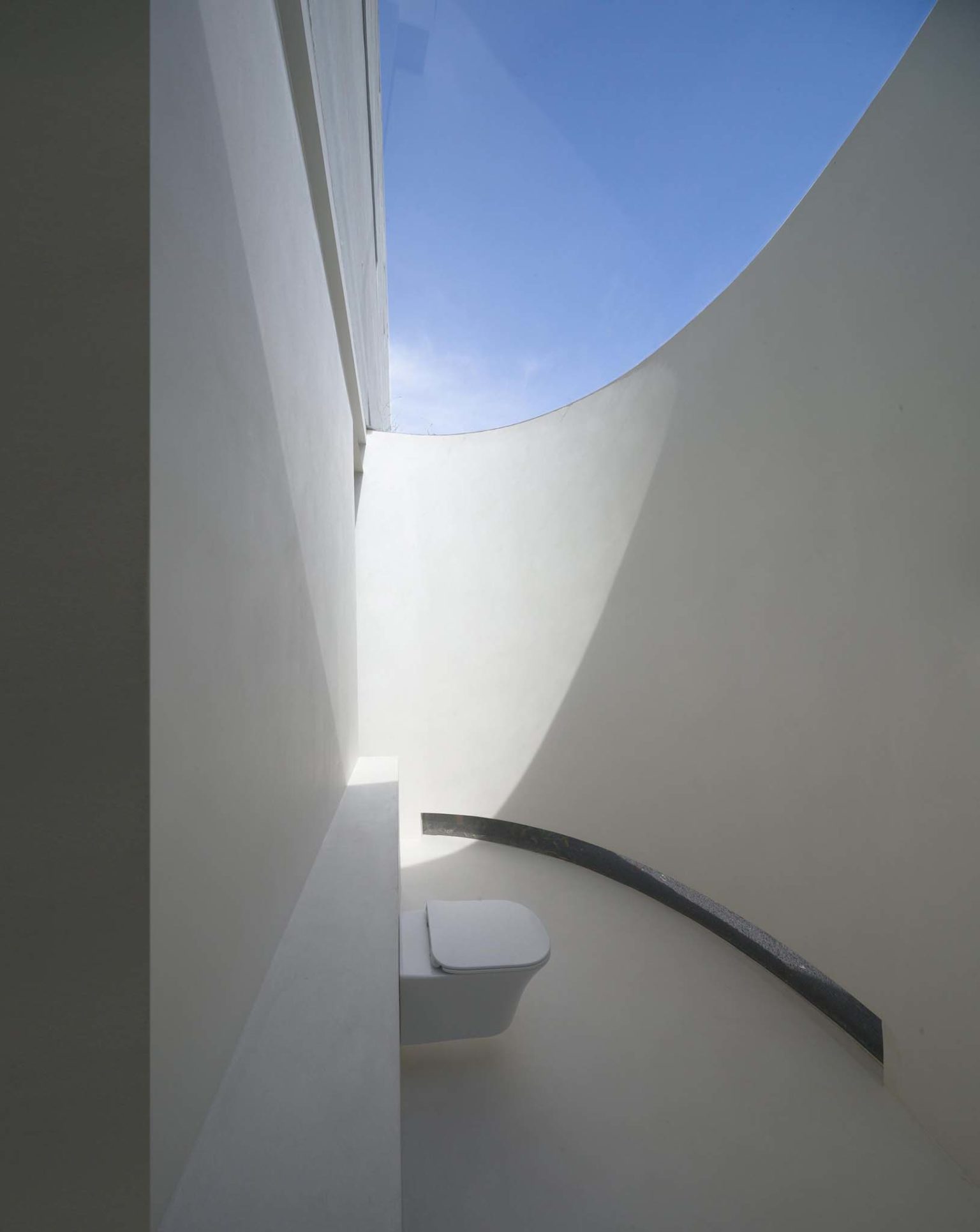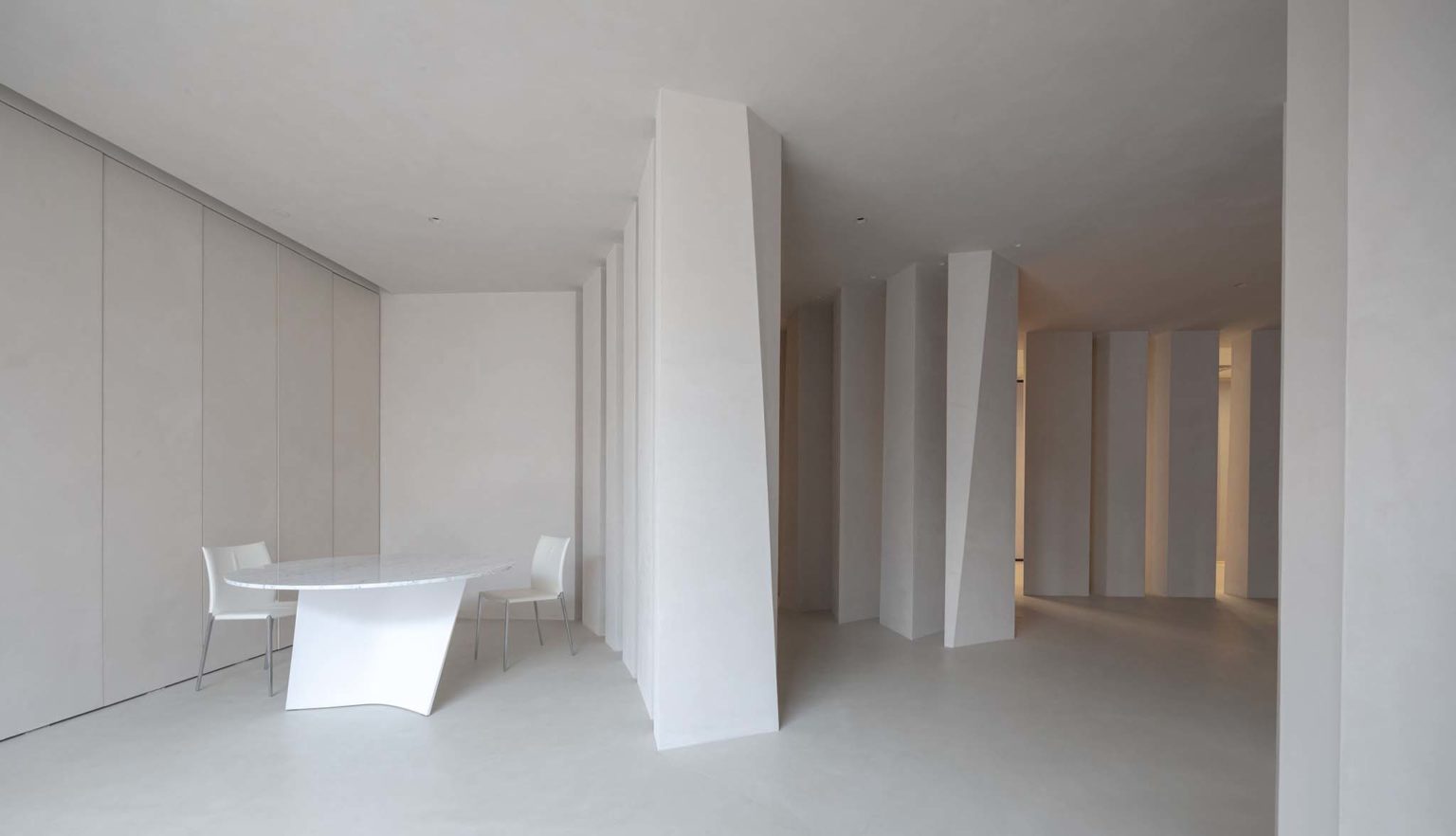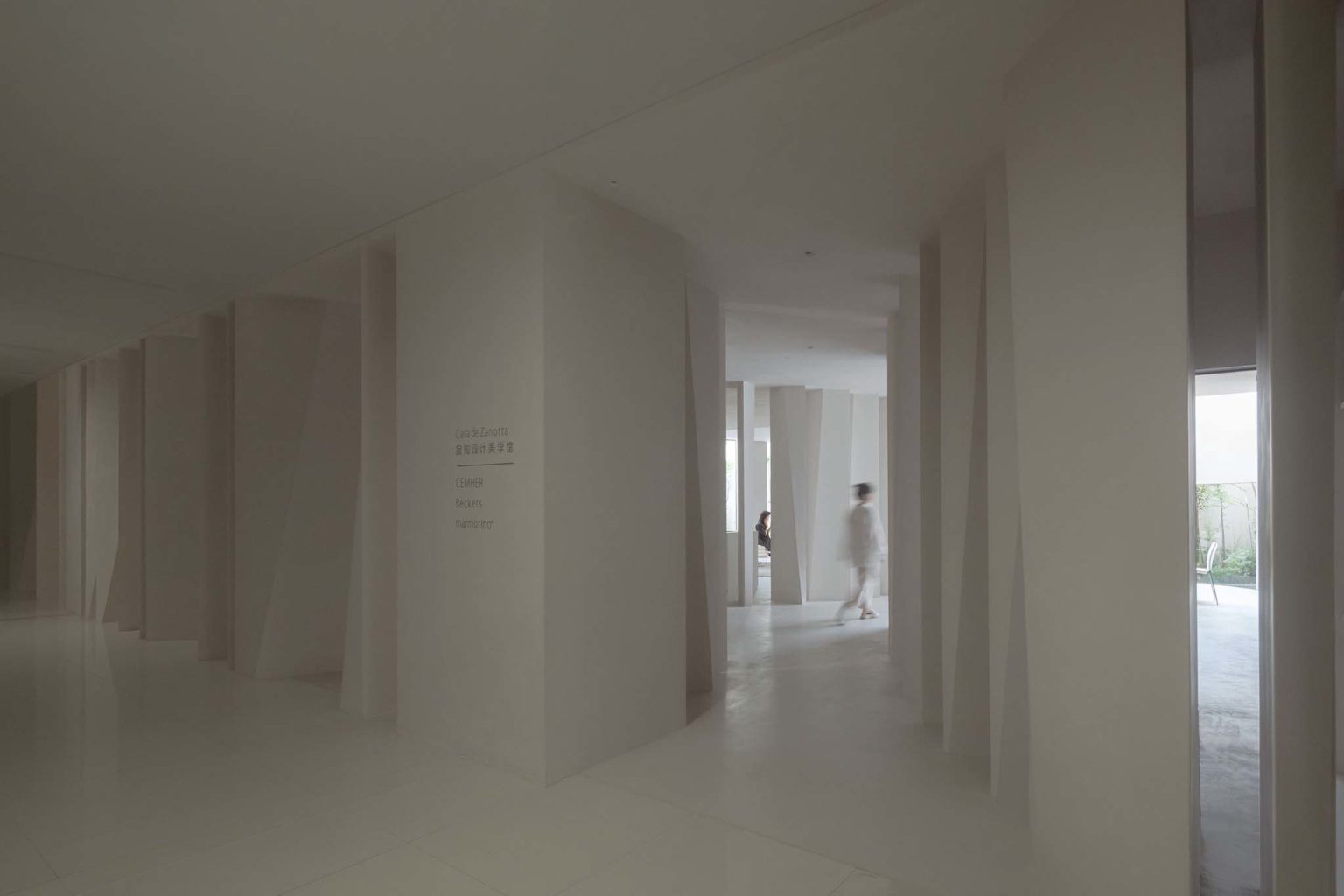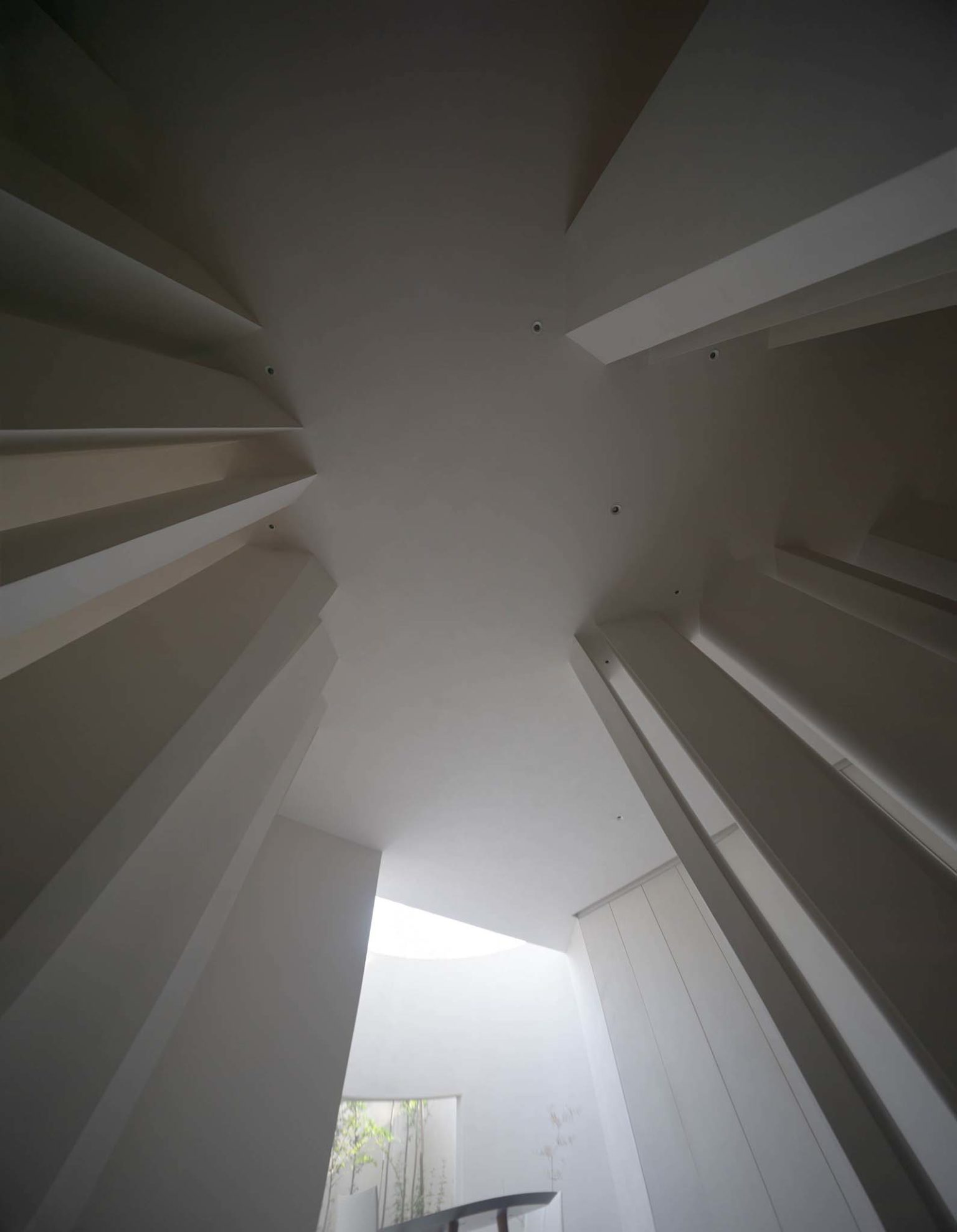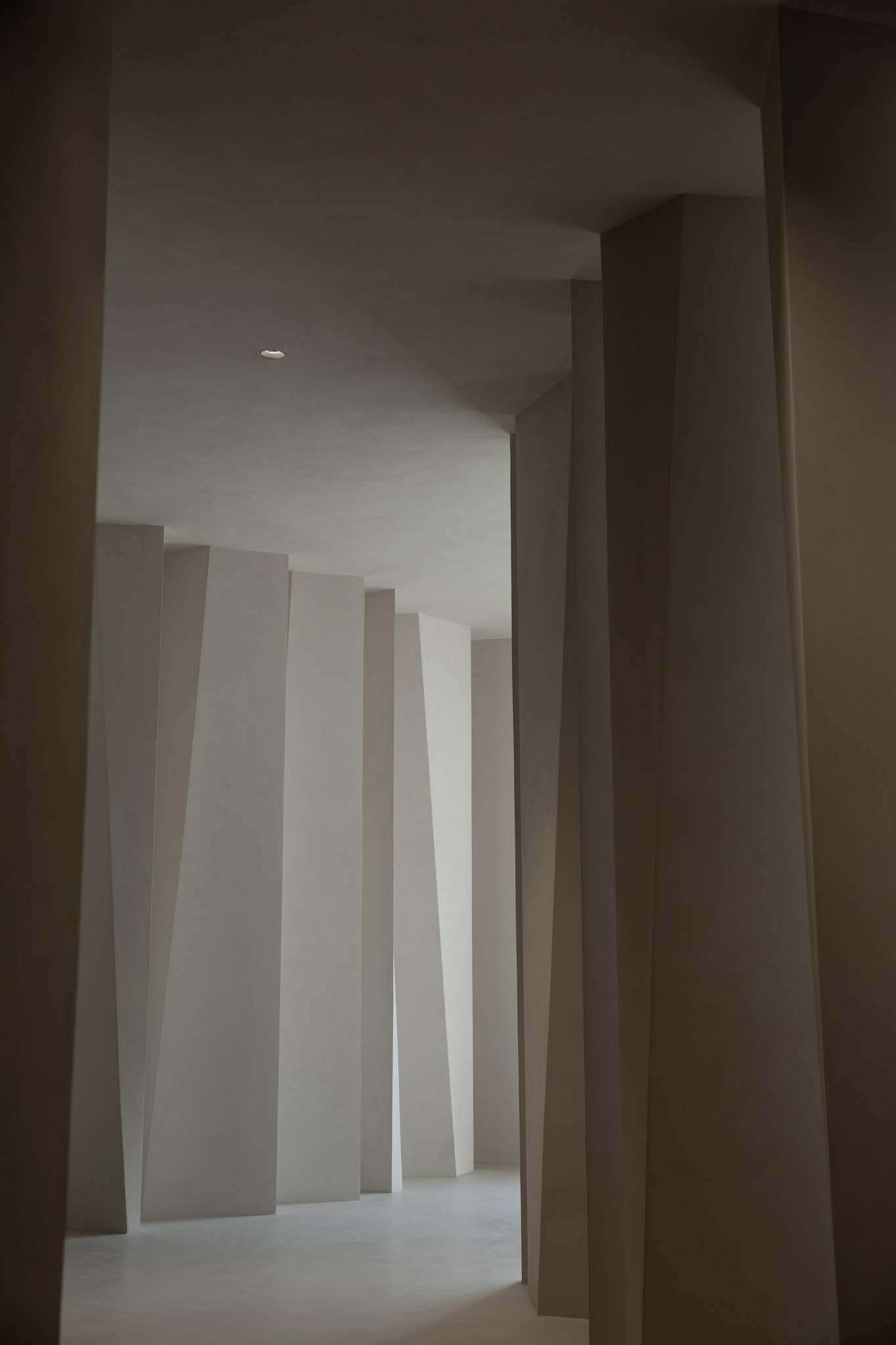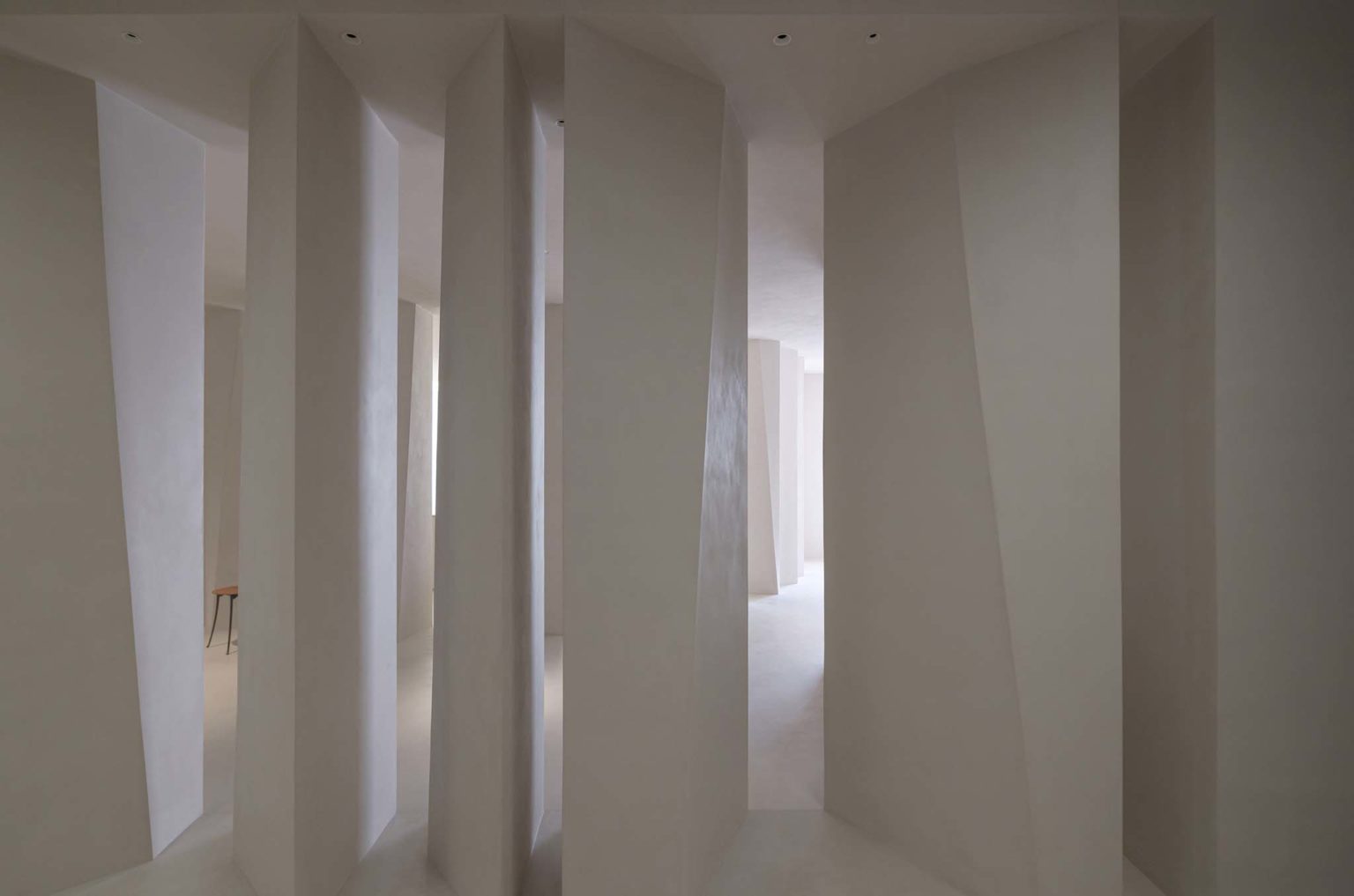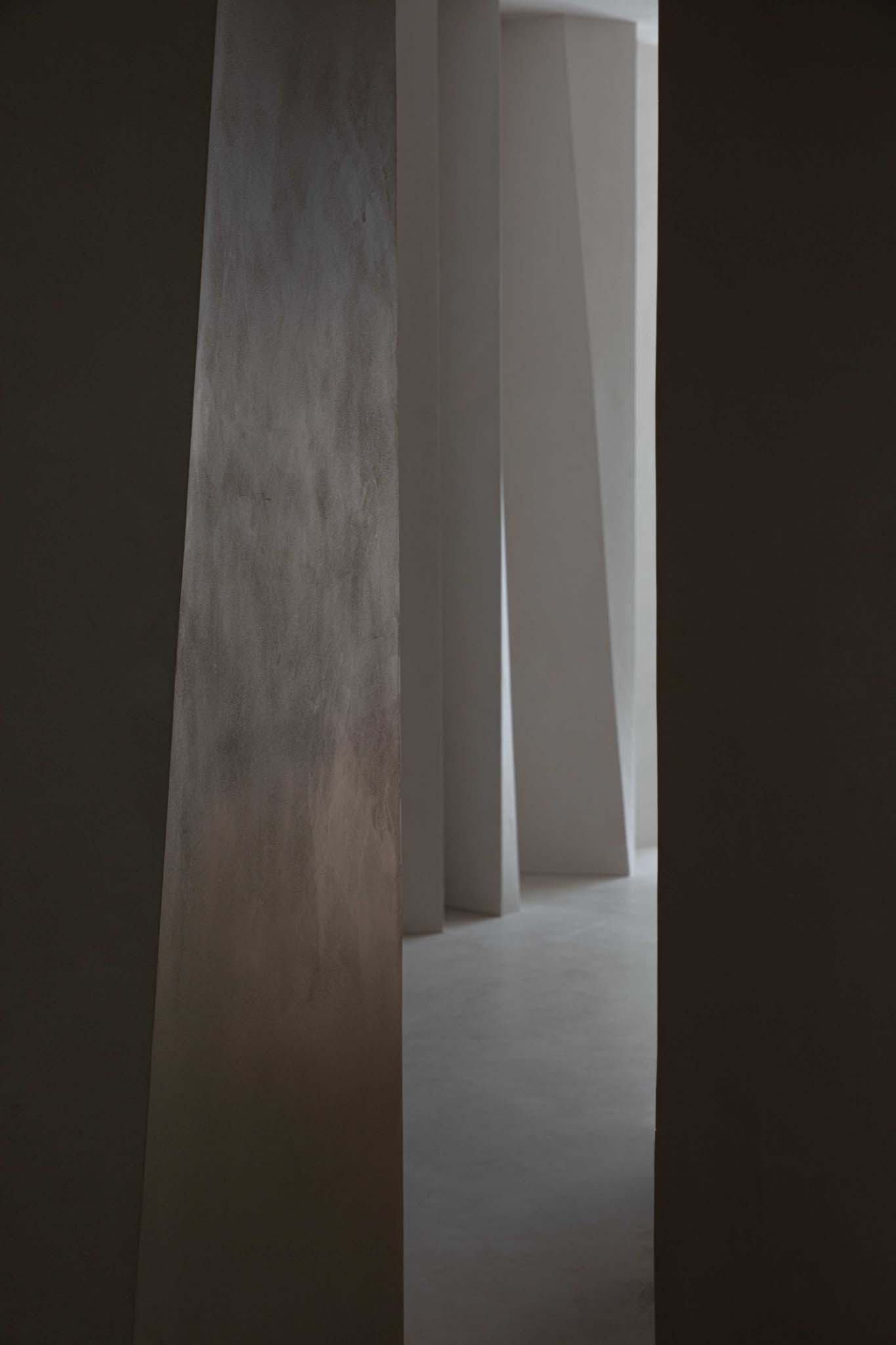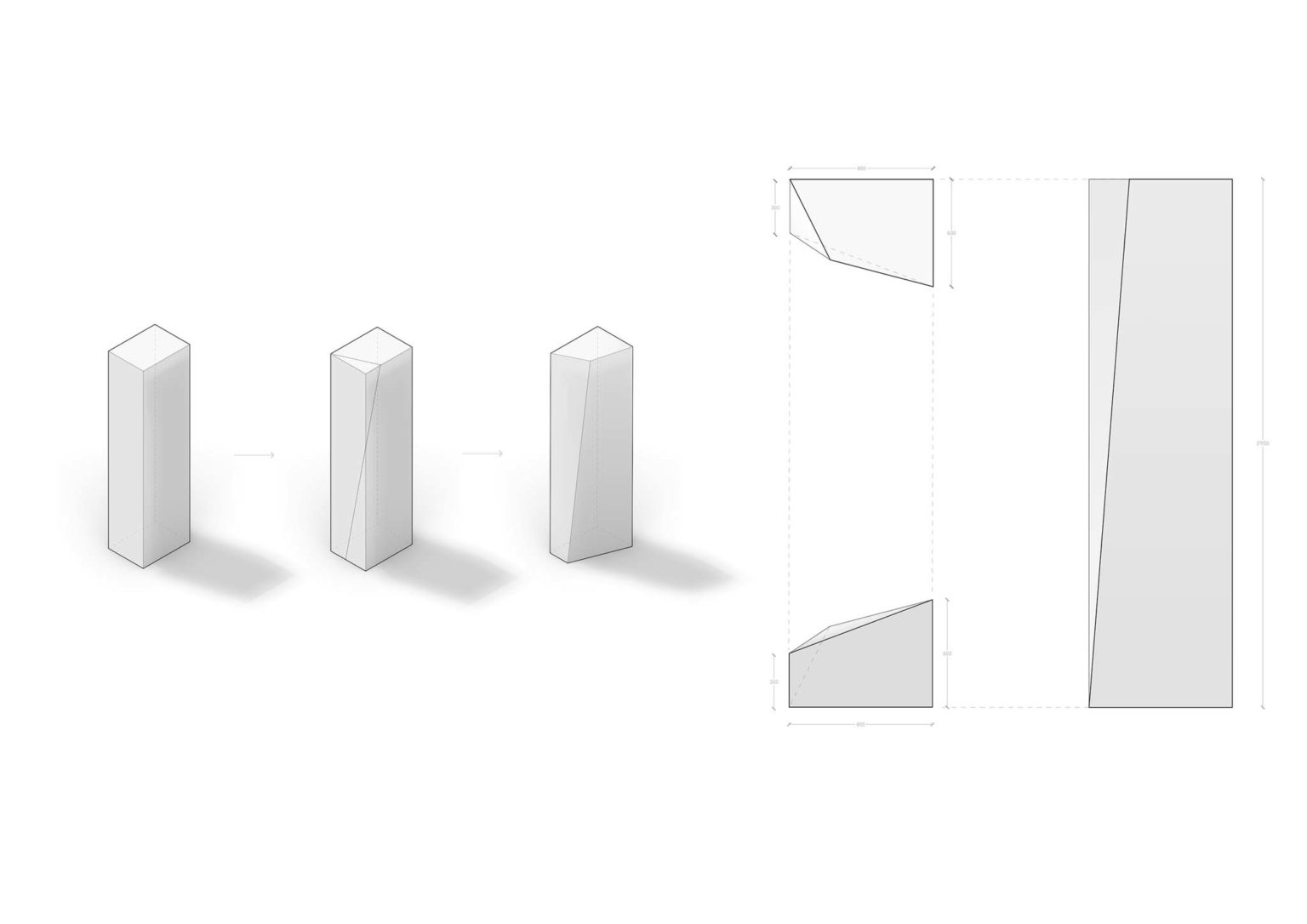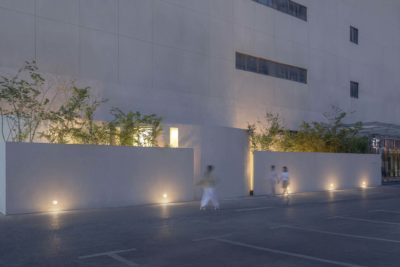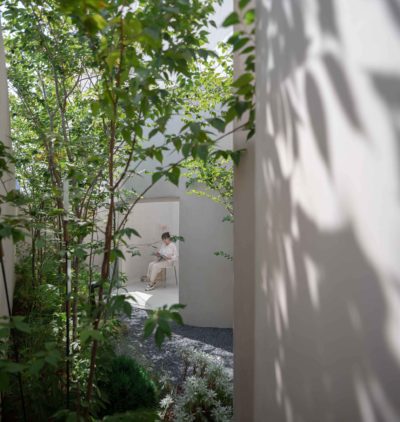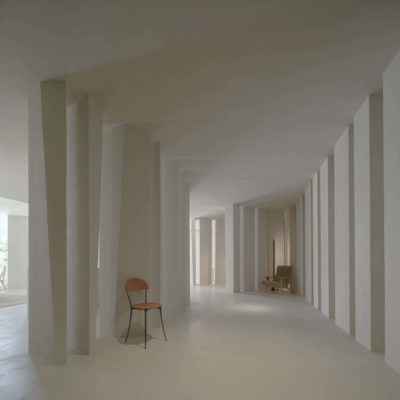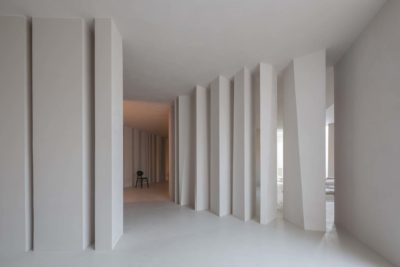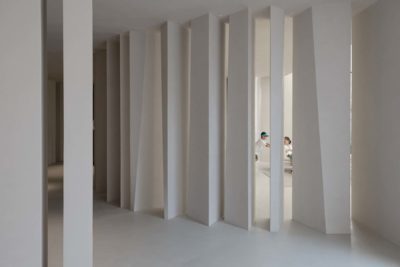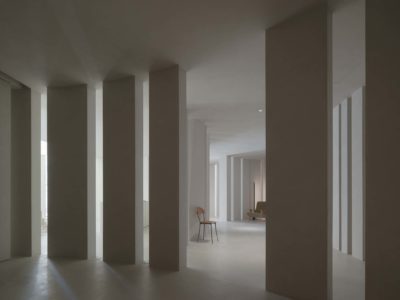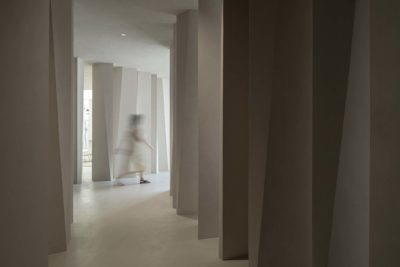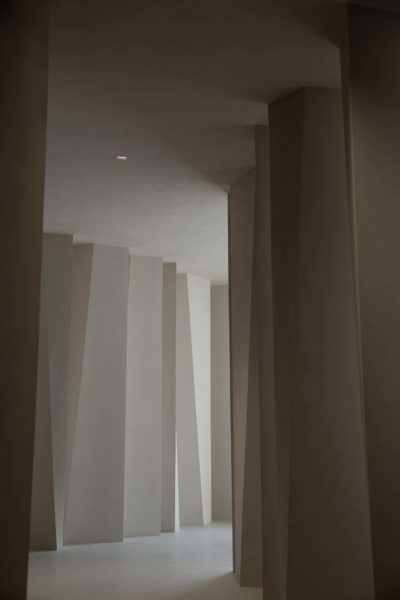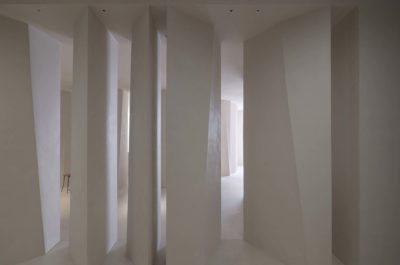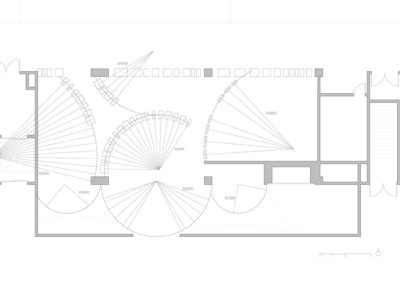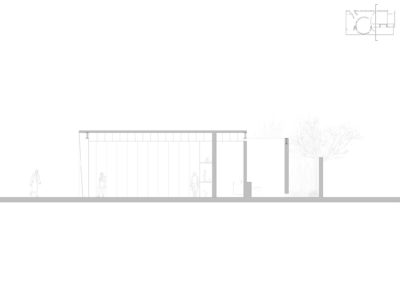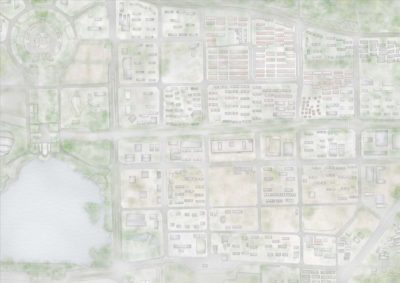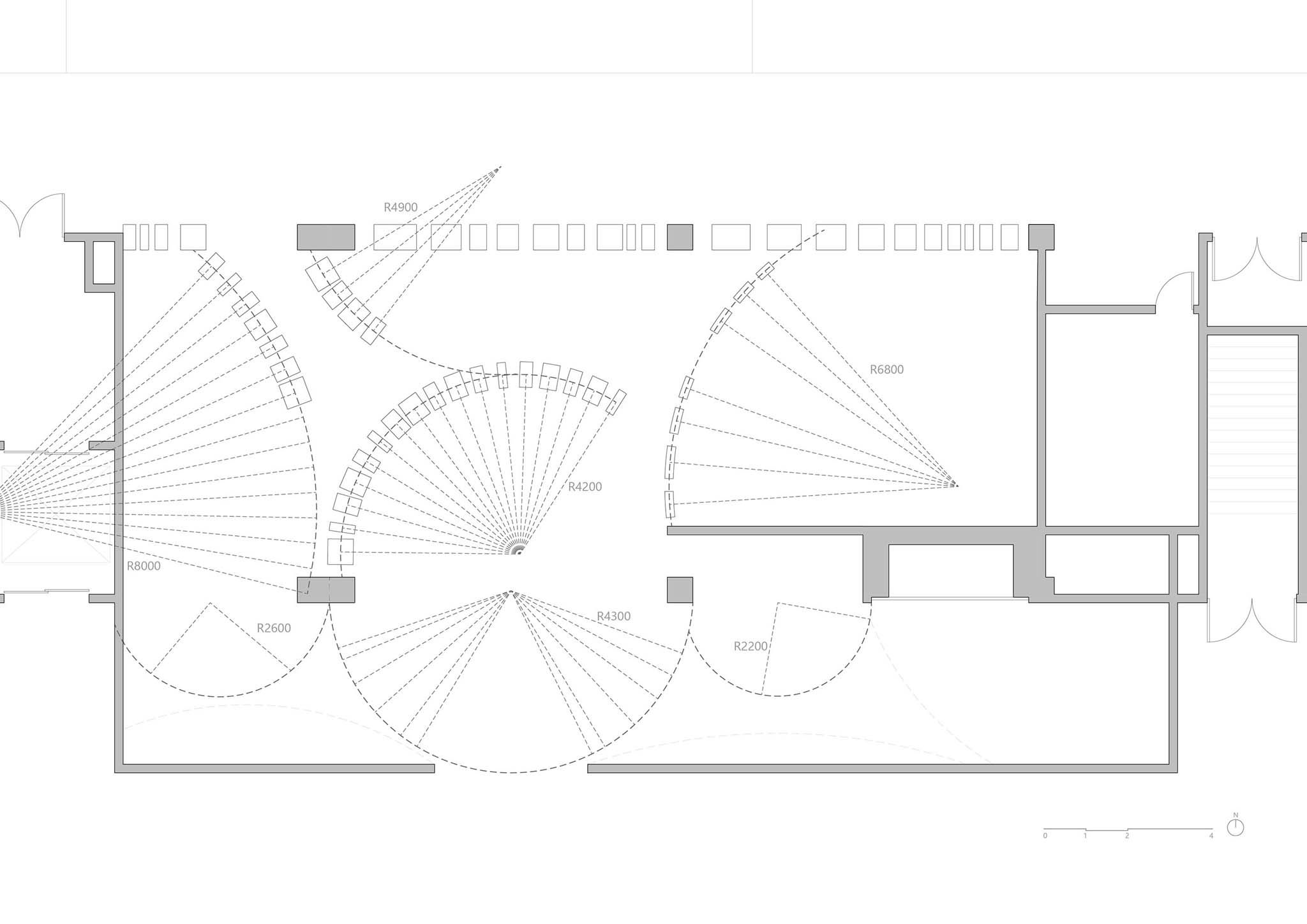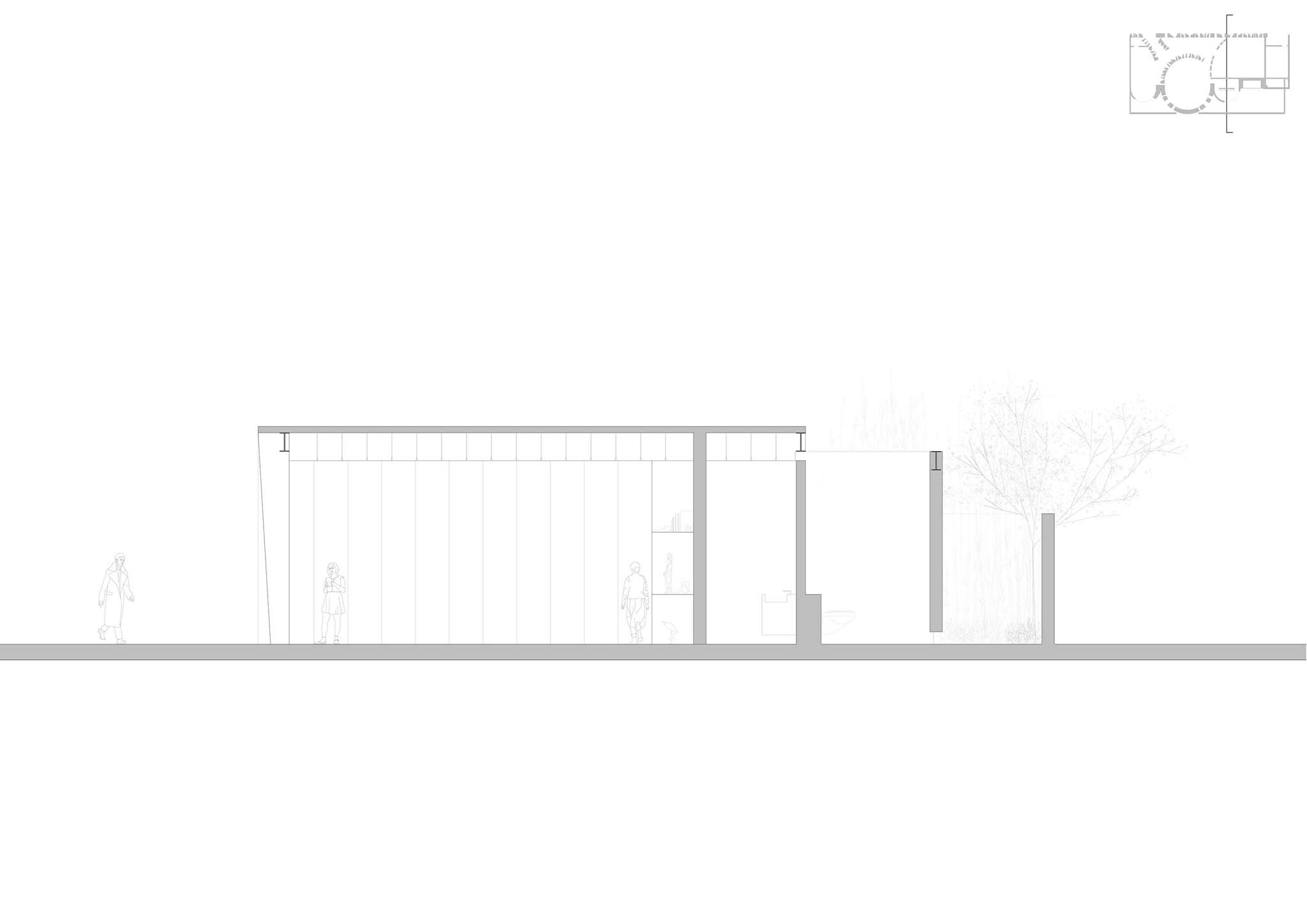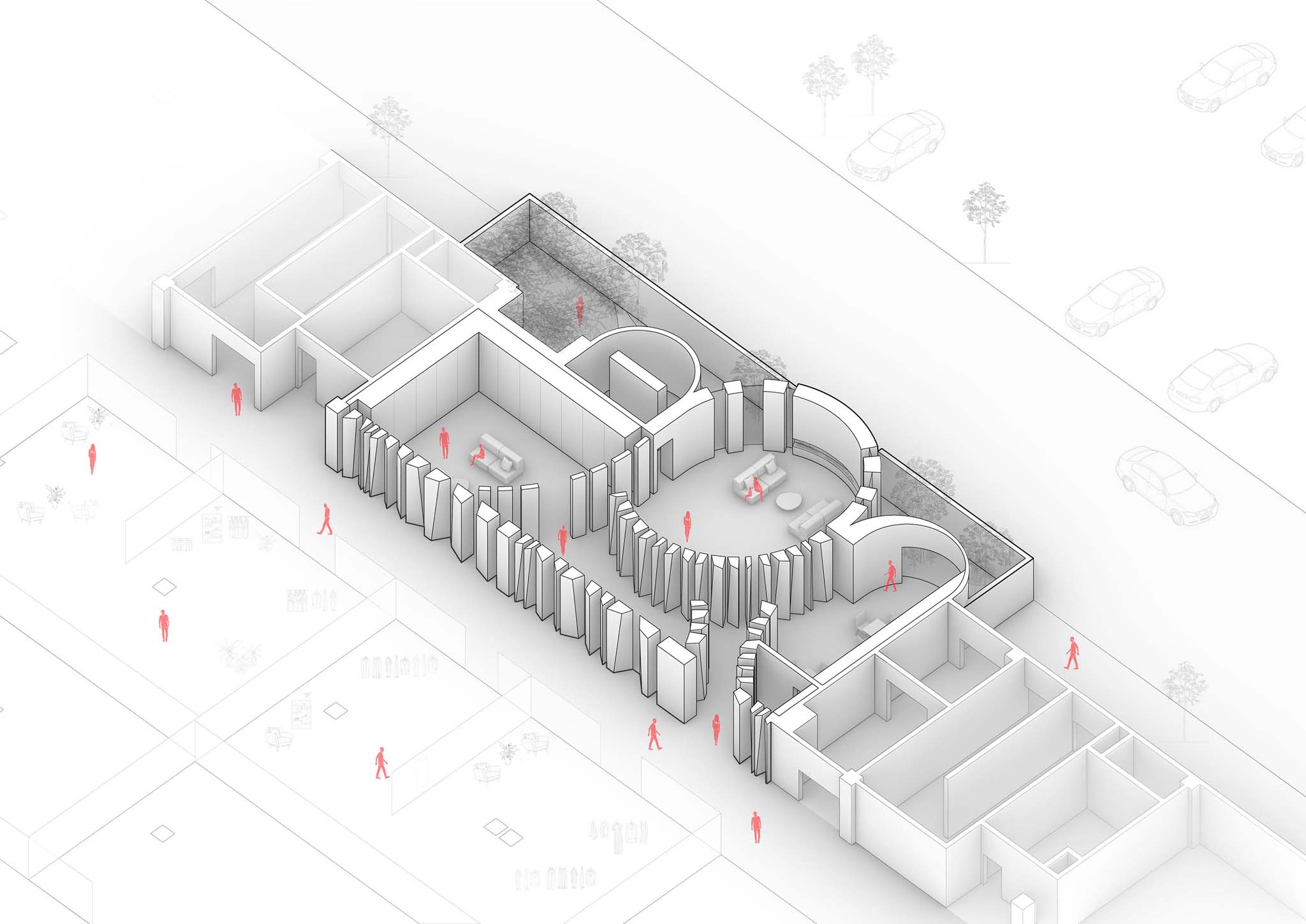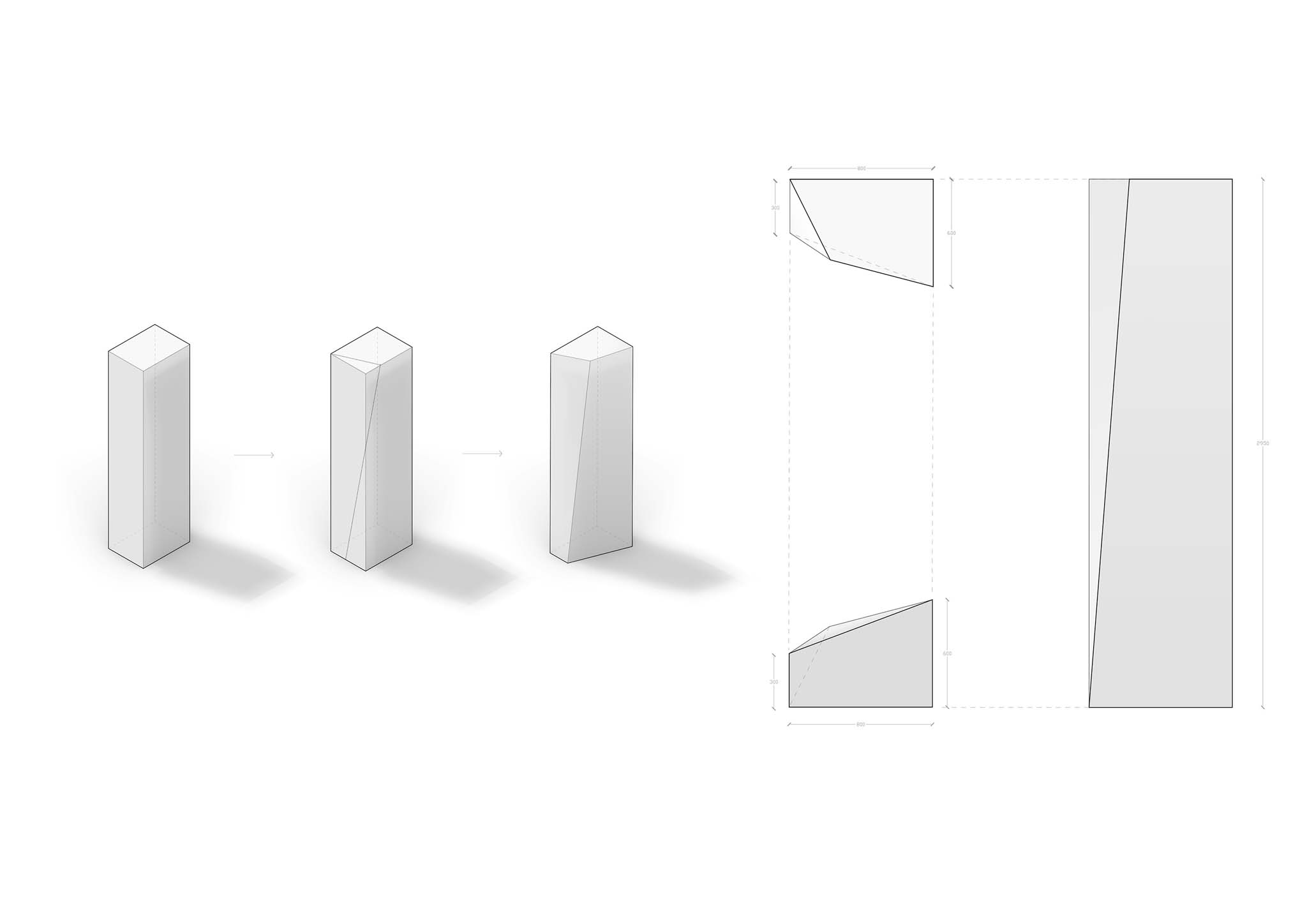Project Credits & Specs
- Architects: HAS design and research
- Photographs: Su Shengliang, Schran Image
- Location: Hefei, China
- Area: 300 m2
- Year: 2022
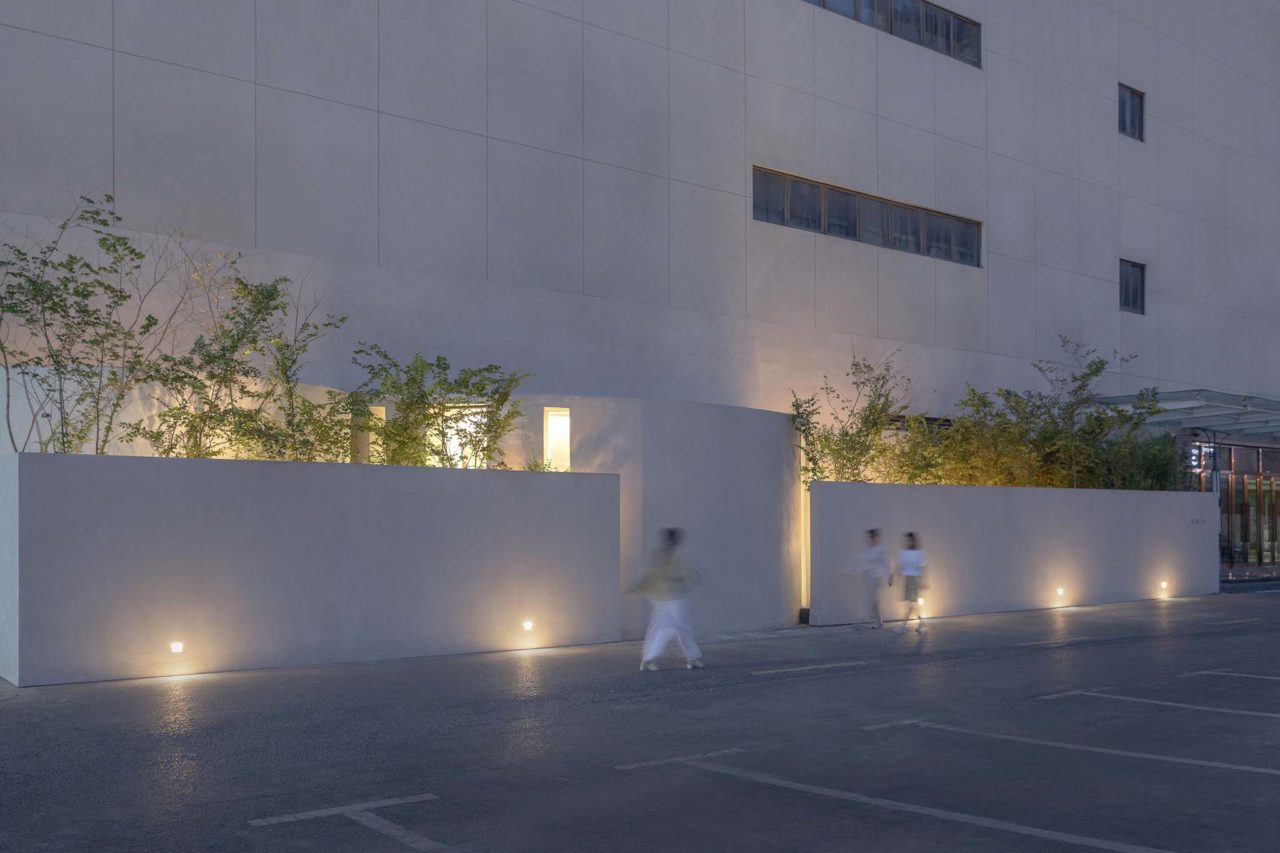
Project Description
Casa de Zanotta is the first Zanotta furniture museum in China that exhibits the famous Italian furniture brand Zanotta. Since it was founded by Aurelio Zanotta in 1954, Zanotta has been pursuing a unique yet luxurious and elegant design tone, and the brand is full of creativity and artistic leadership.
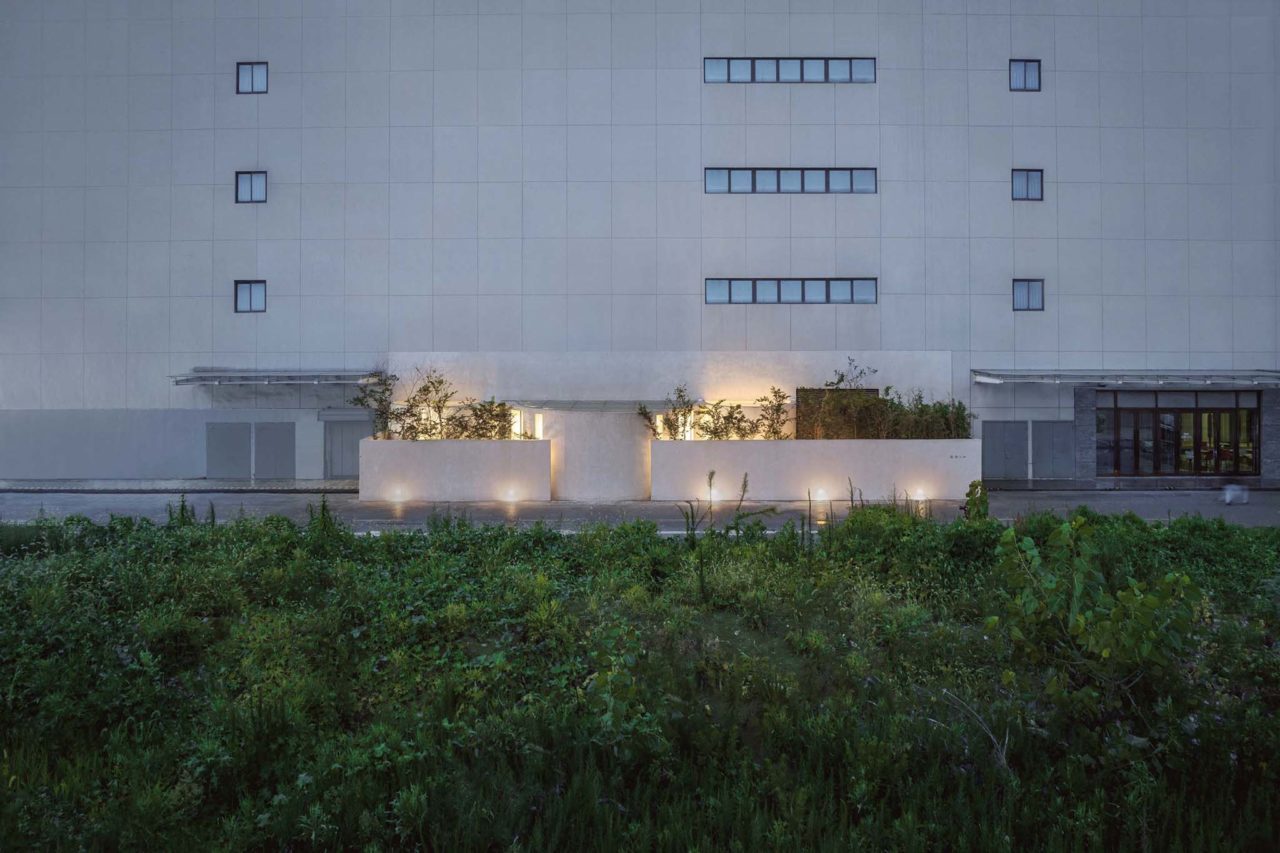
Casa de Zanotta is located in the central area of Hefei, Anhui Province. The site is surrounded by residential and office buildings, parking lots, and vast traffic arteries. Looking back over the past 20 years, Hefei has tried to become a metropolitan city like Shanghai or Shenzhen. The high-density concrete city is based on the premise of creating a functionally oriented urban texture, but it gradually runs counter to its unique local topography and environment.
The existing site has four large columns with a width of one meter. These functional columns not only affect circulation but also obstructs the visual axis of the space. The design inspiration comes from the unique stone forest in Anhui and retains the existing large columns on the site and “deforms” them according to the existing column size to create a large area of Anhui Stone Forest space.

During the daytime, nearly a hundred stone forests combine with sunlight at different inclination angles, allowing the visitors to experience a natural space in a high-density concrete city. At night, comfortable seasonal winds pass through the stone forest’s gaps, allowing the visitors to experience a peaceful and ritualistic atmosphere after work.
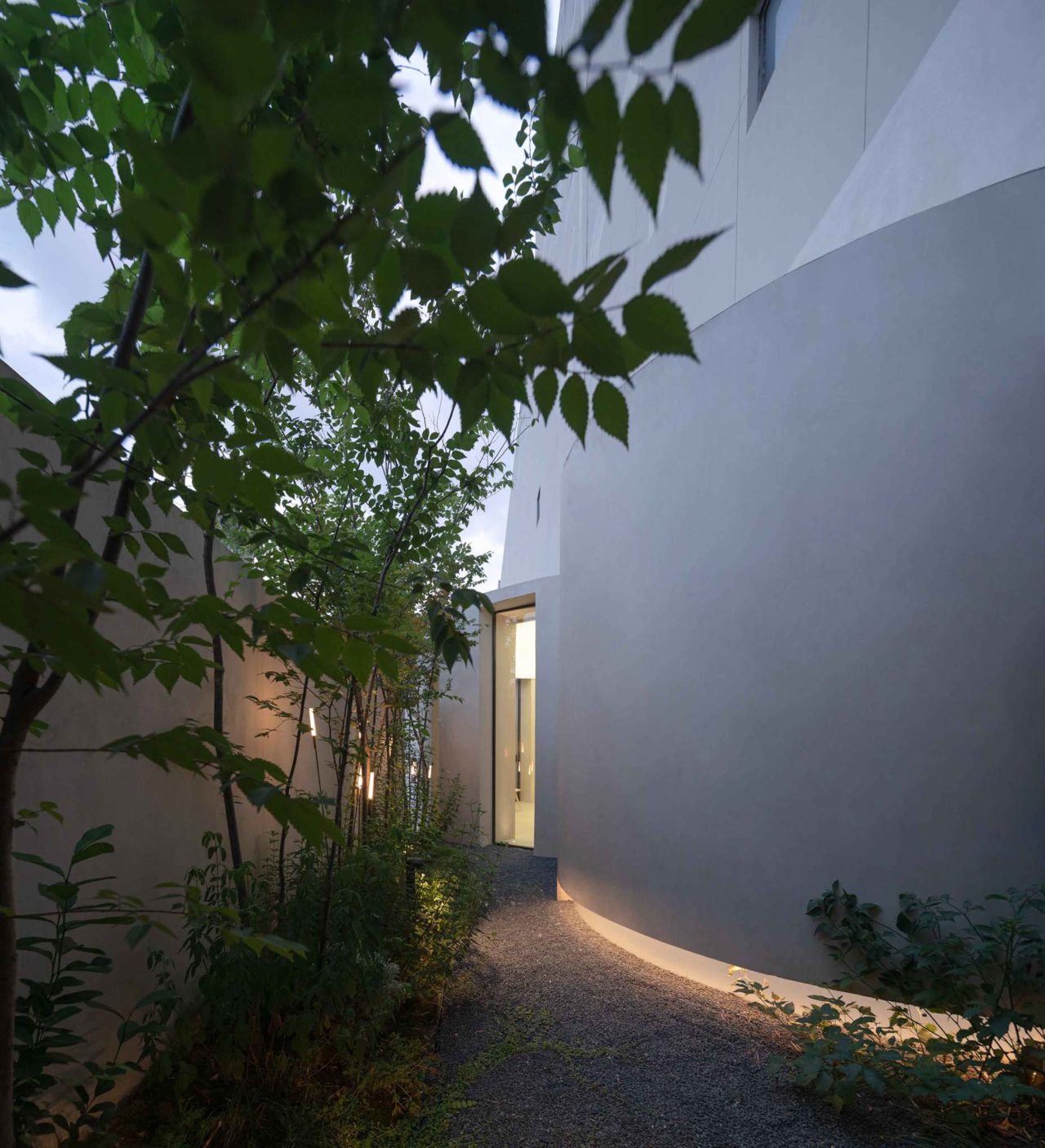



The well-designed circulation has also become the highlight of Casa de Zanotta. The stone forest columns create uneven gaps in the entrance corridor, bringing impressive light and shadow effects. The non-directional foyer follows the slanted stone forest, making visitors guided to the skylight library and multi-functional event space.
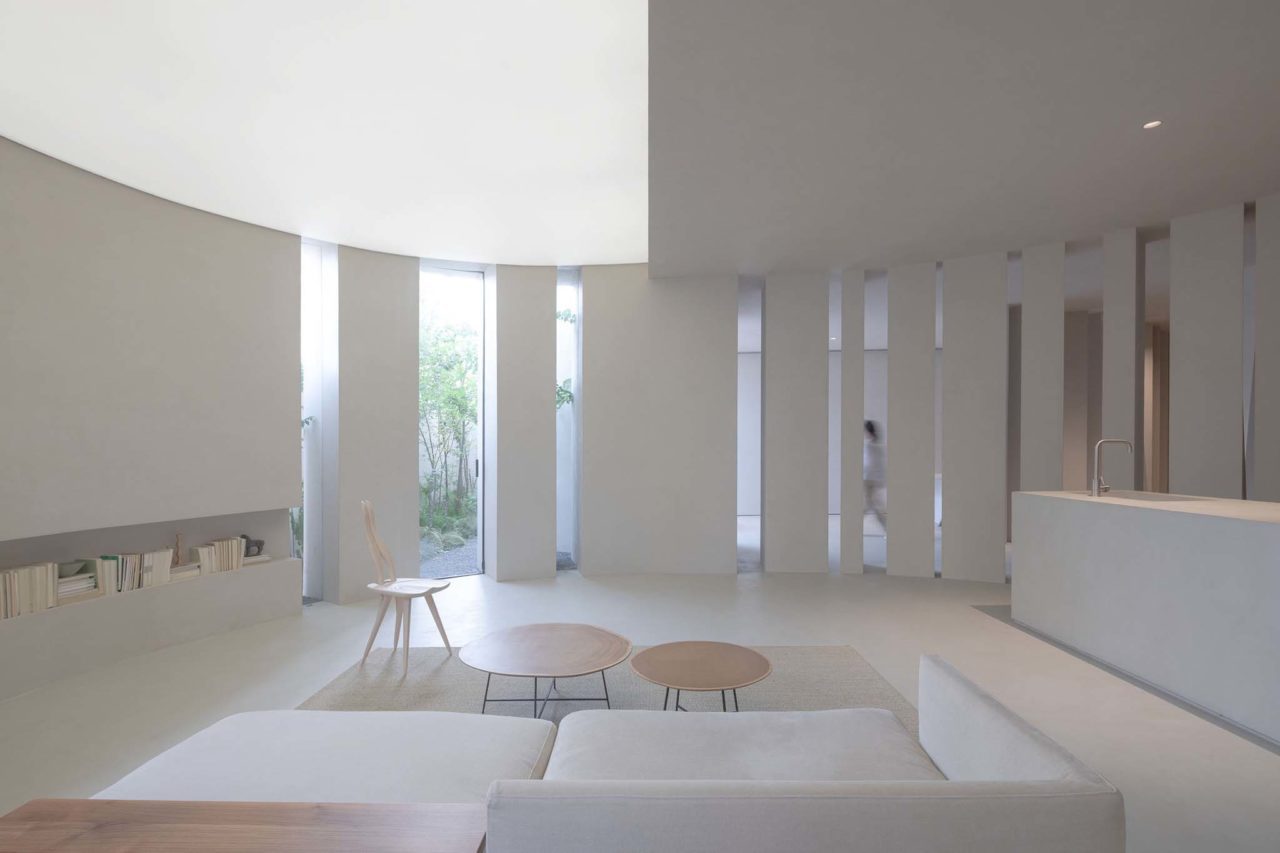
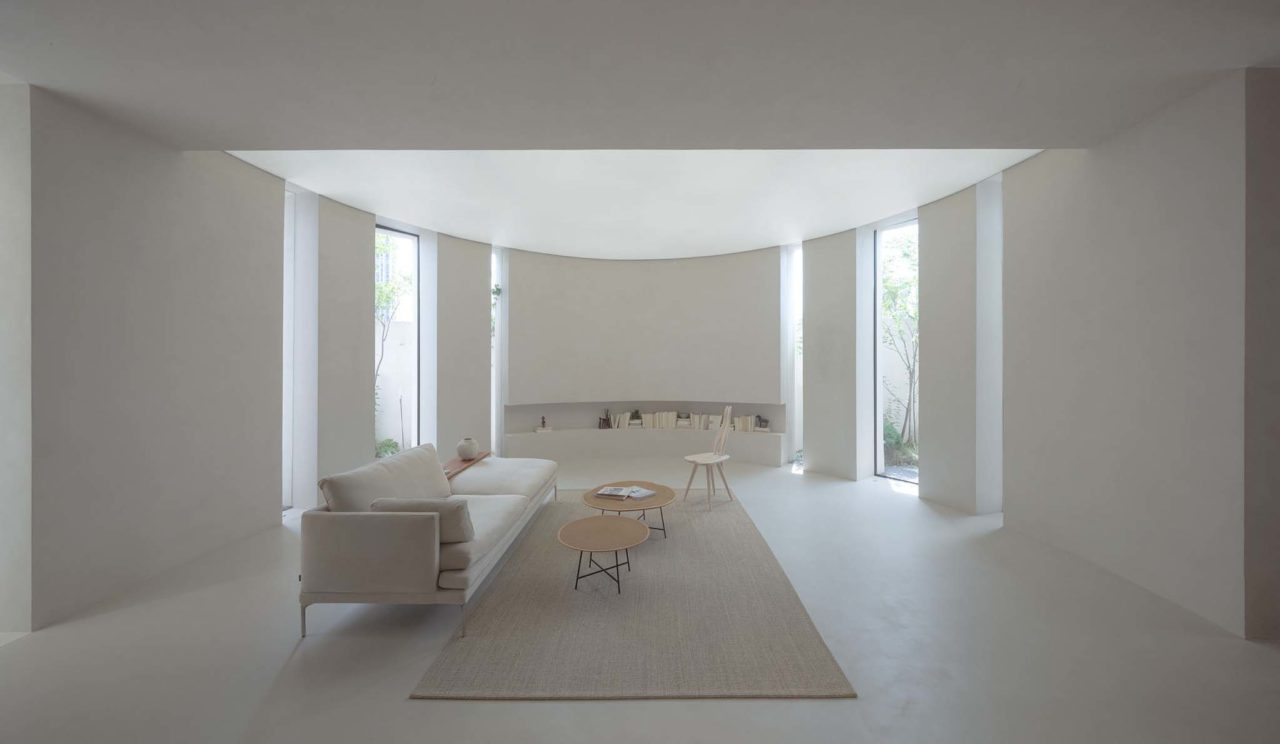
The three circular volumes extending outwards not only provide more natural light for the indoor space but also blurs the boundary between indoor and outdoor for architecture. The design implies the integration of an artificial stone forest and natural light to repair the natural texture of the city through architectural space and seasonal landscape.
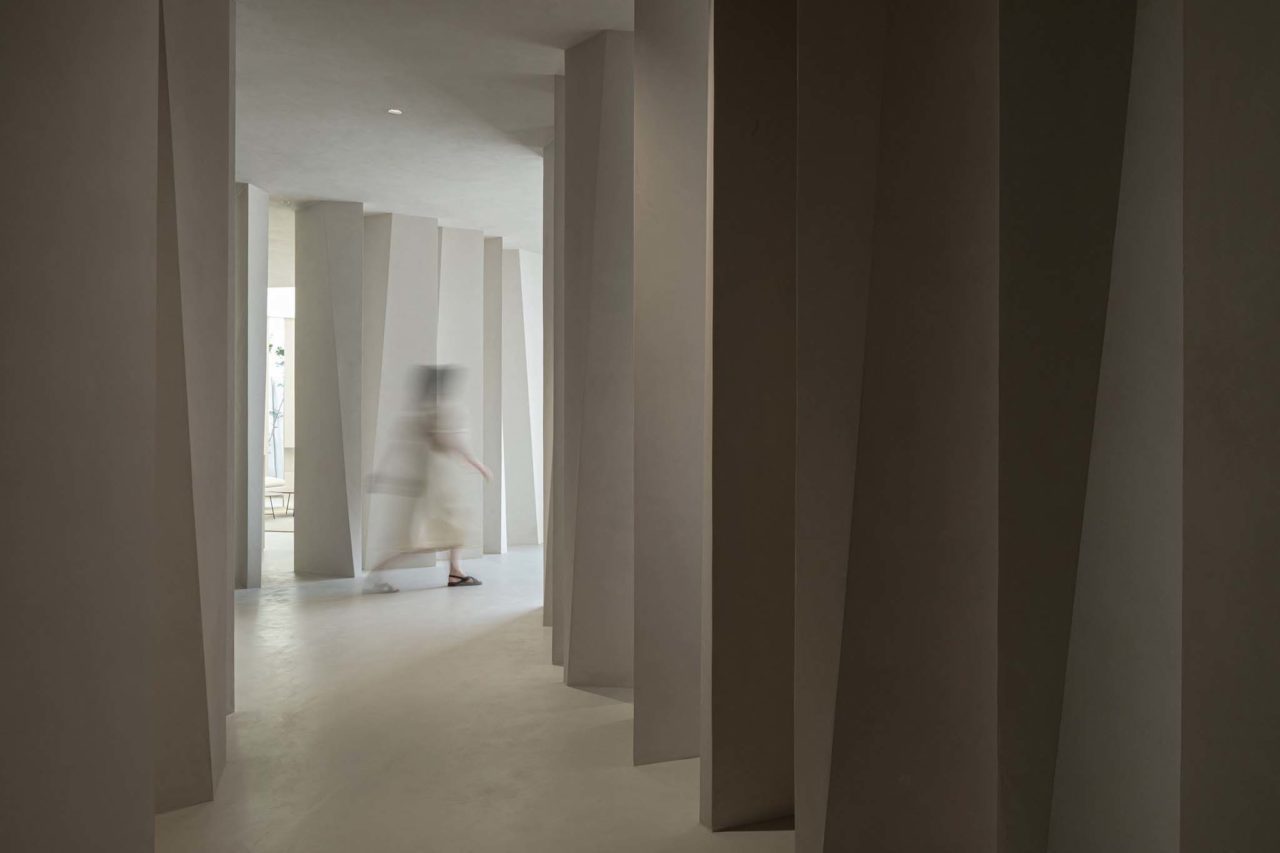

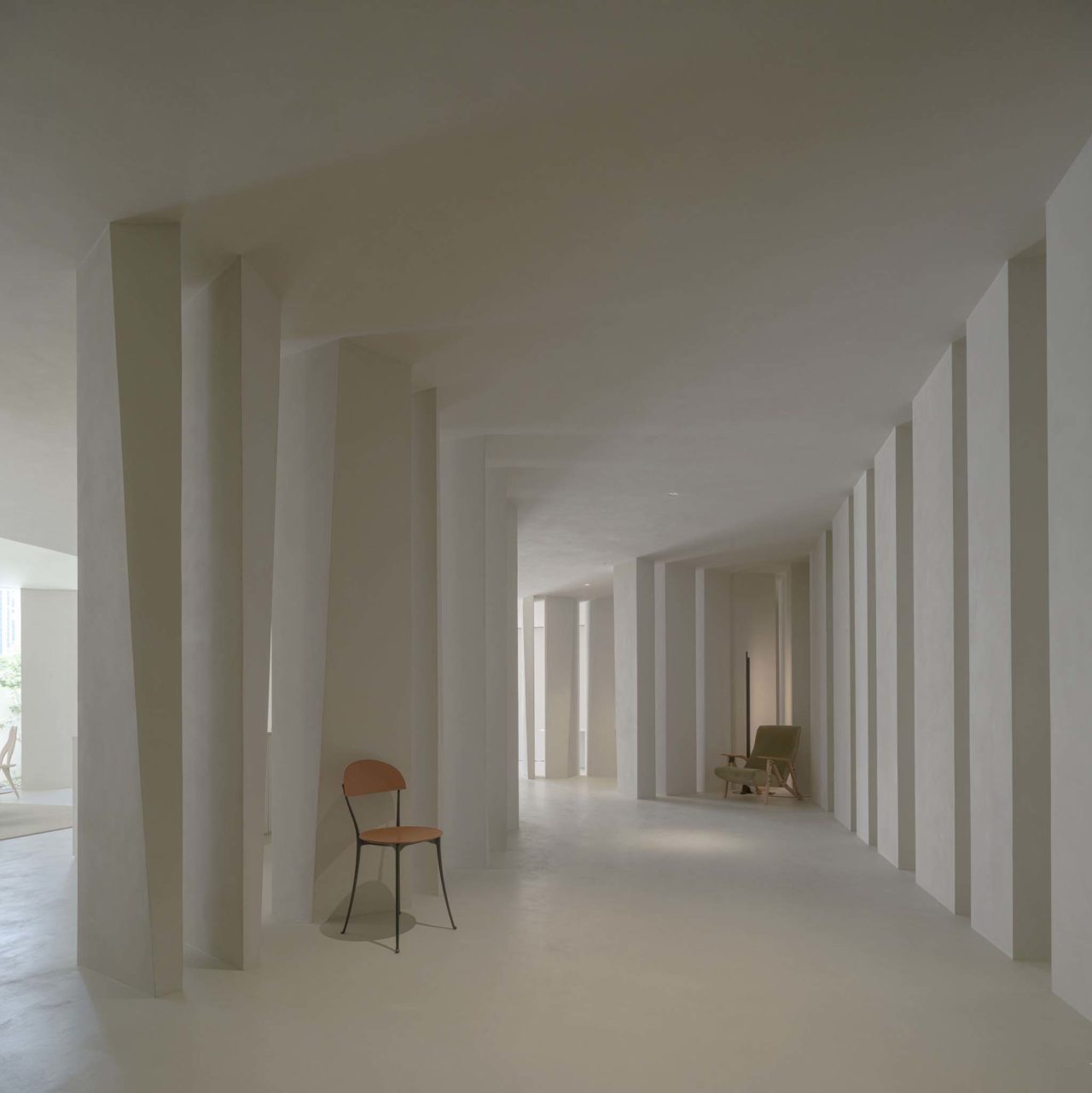
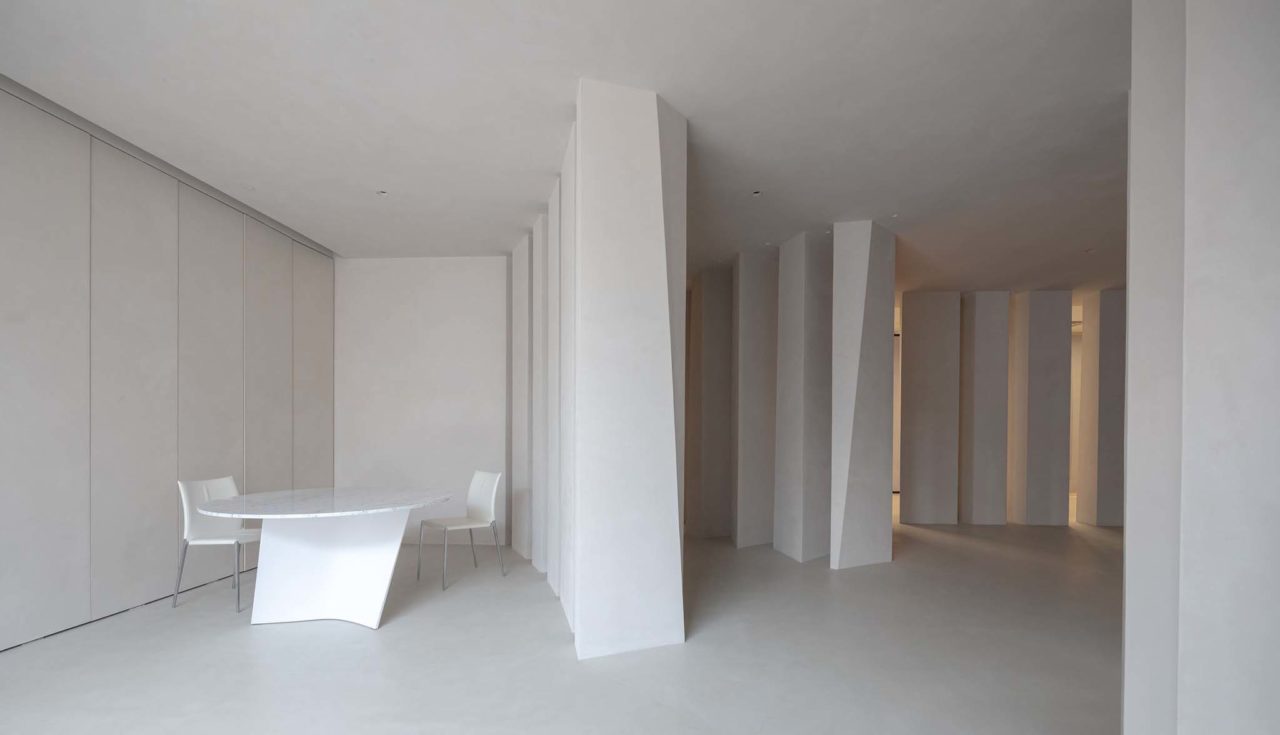
Casa de Zanotta is a furniture museum and a perfect interpretation of multi-functional space. It breaks the shackles of traditional furniture showrooms and combines functions with micro-libraries, art exhibitions, public events, and designer salons. The result of the project is similar to the unique Anhui Stone Forest; it provides an open breathing space for the high-density concrete jungle and gives a place for visitors to cultivate their souls through the transformation of natural elements.

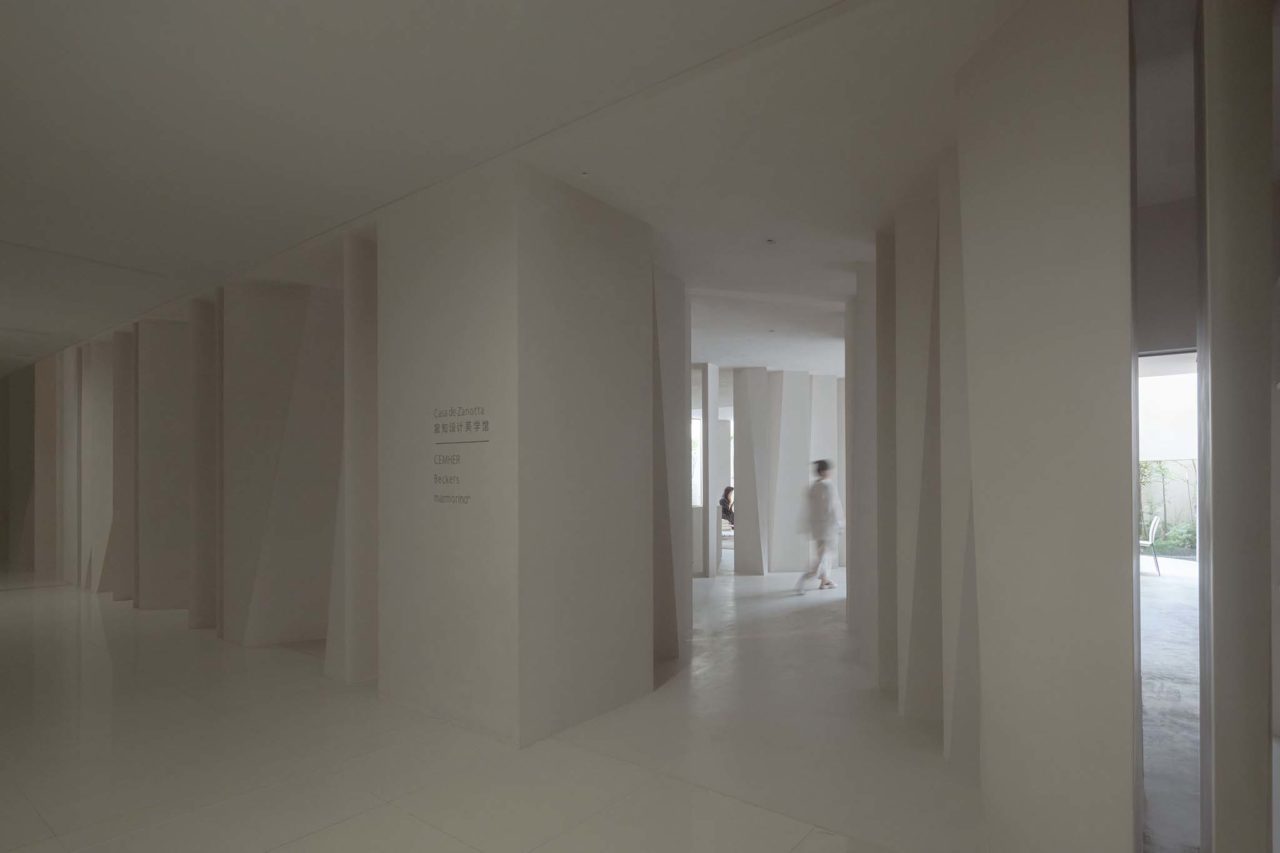

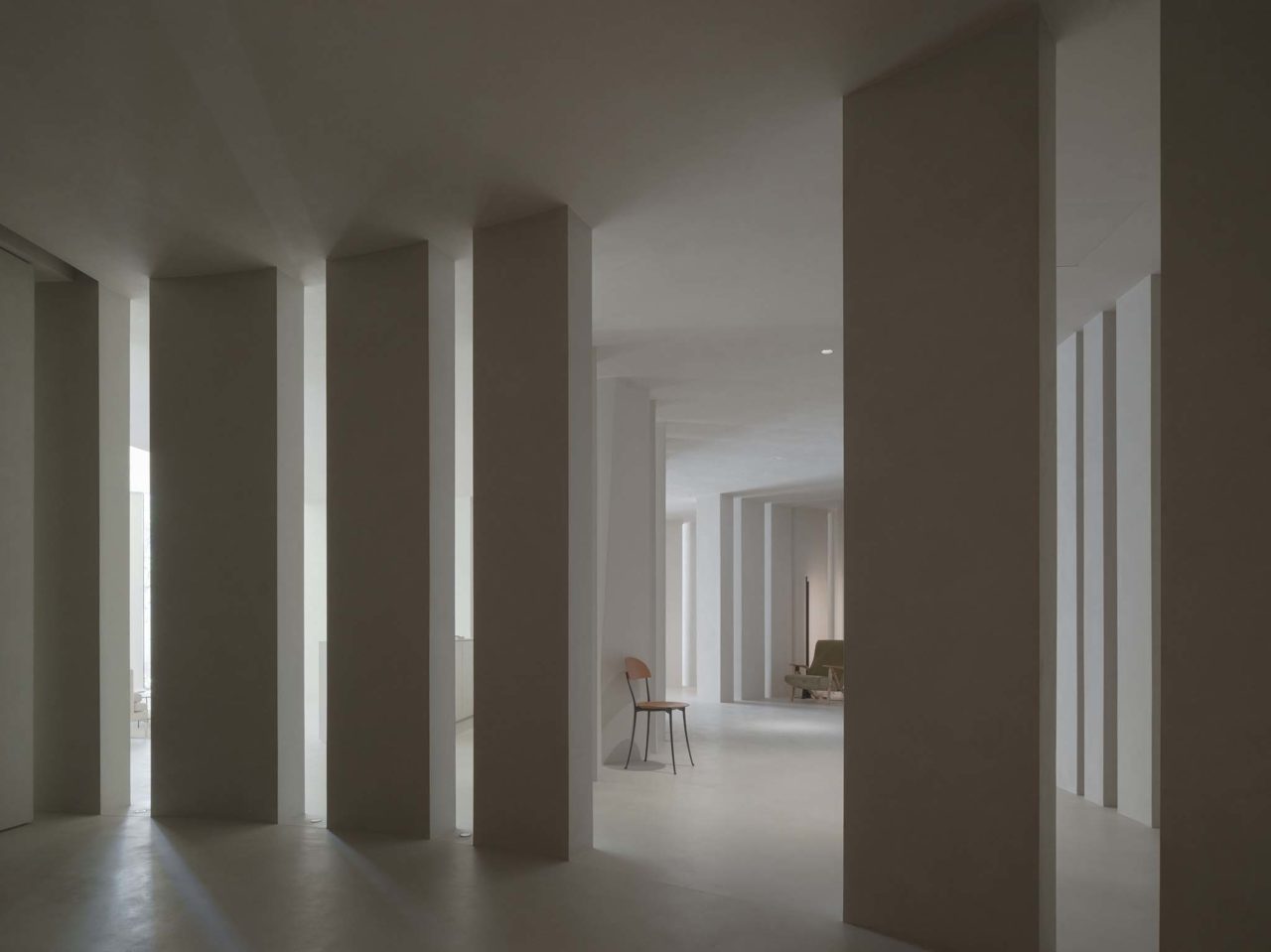

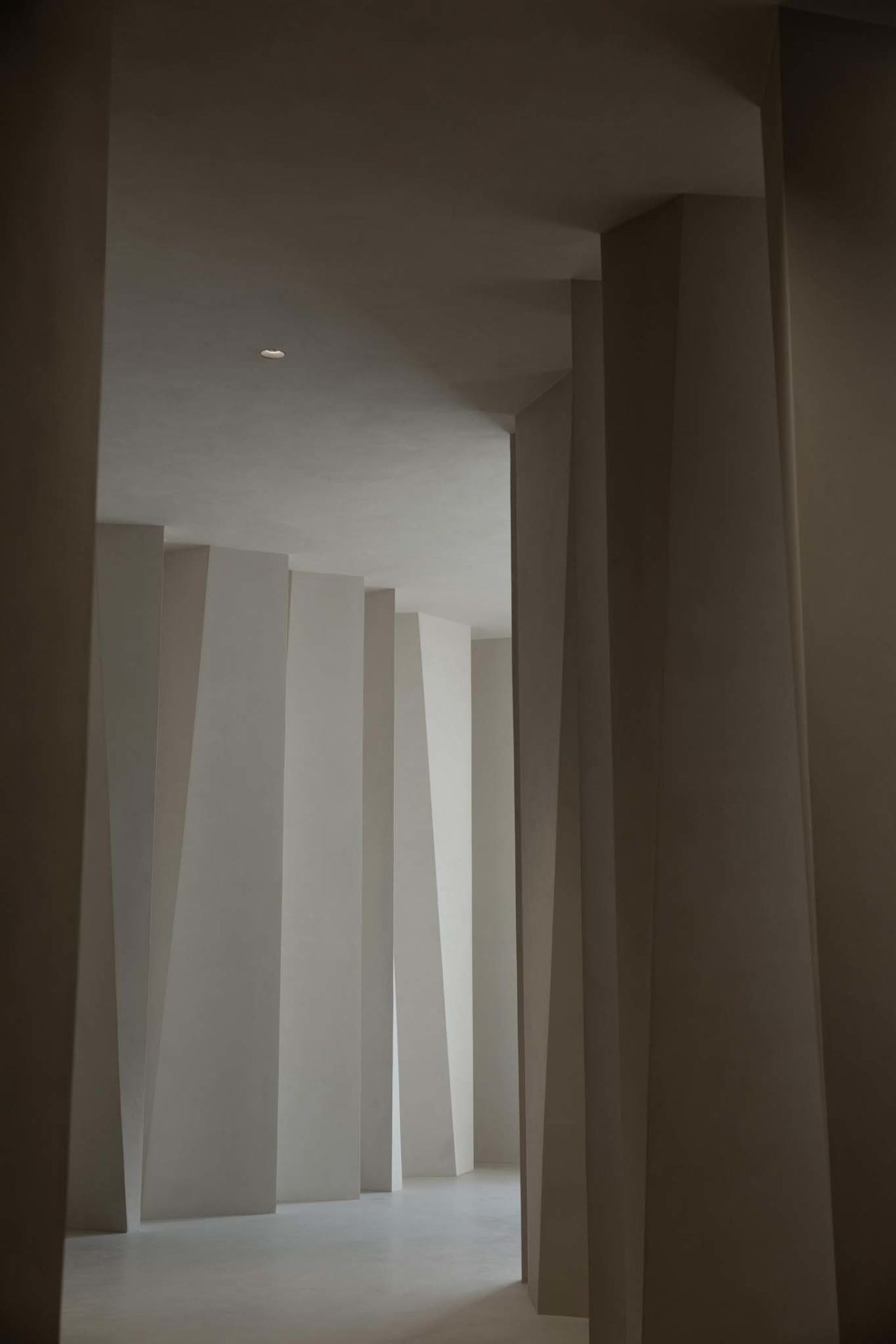
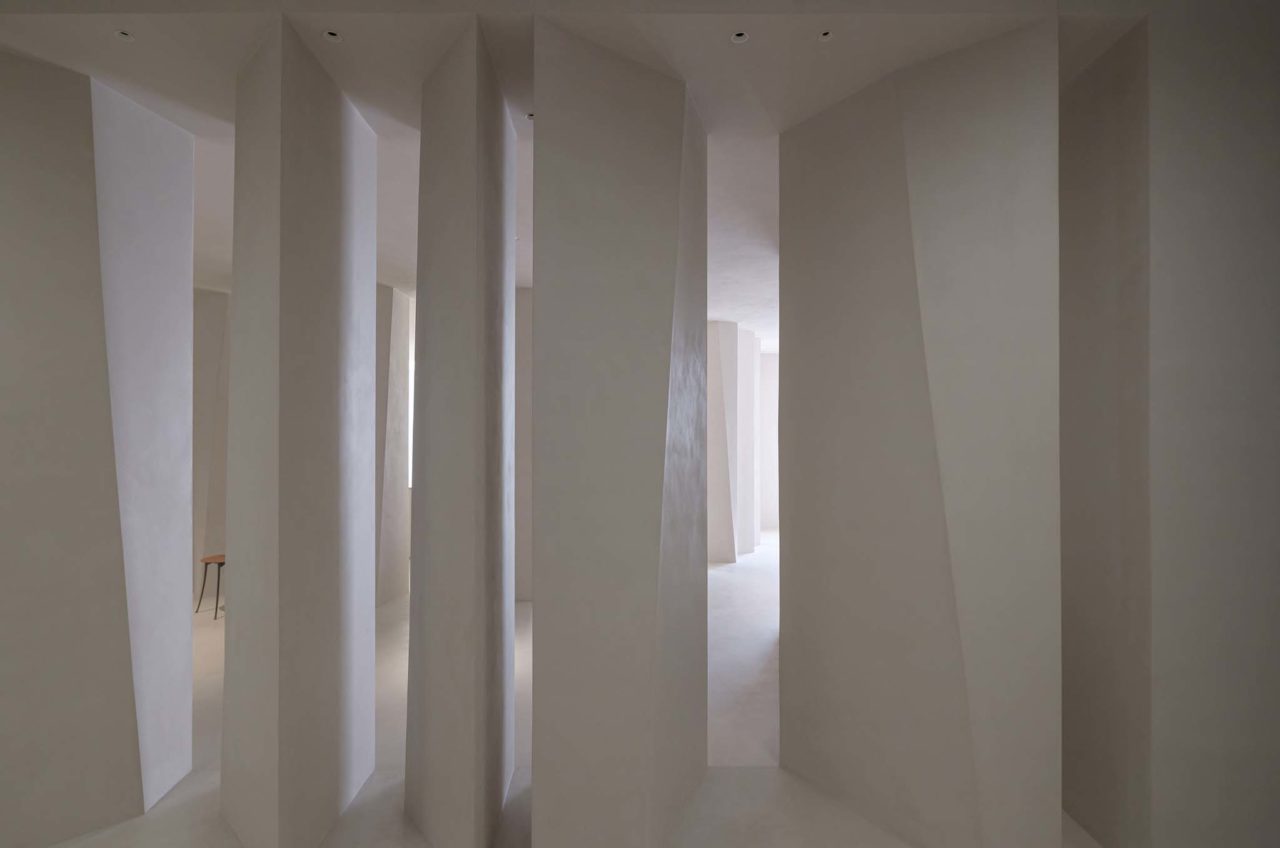
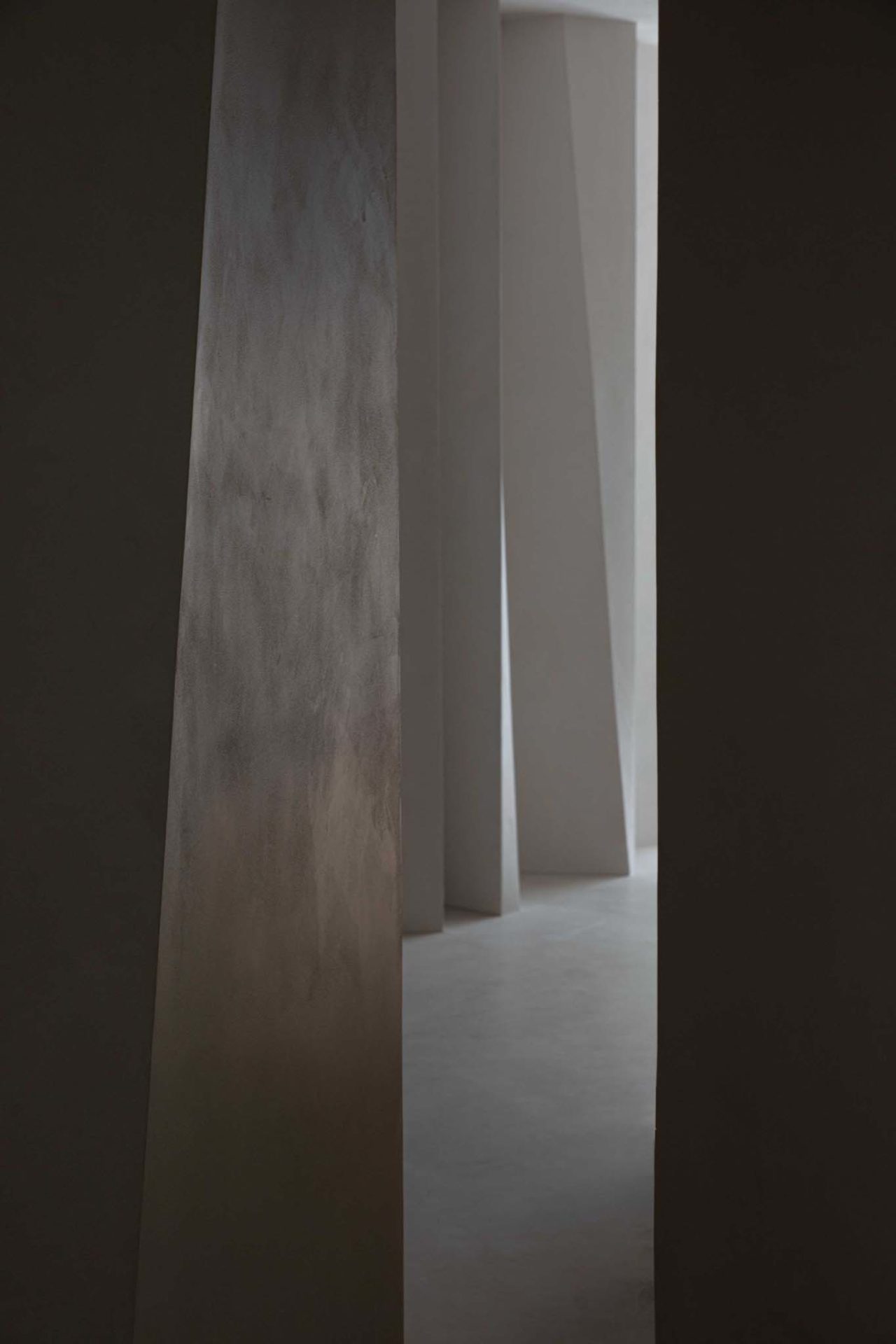
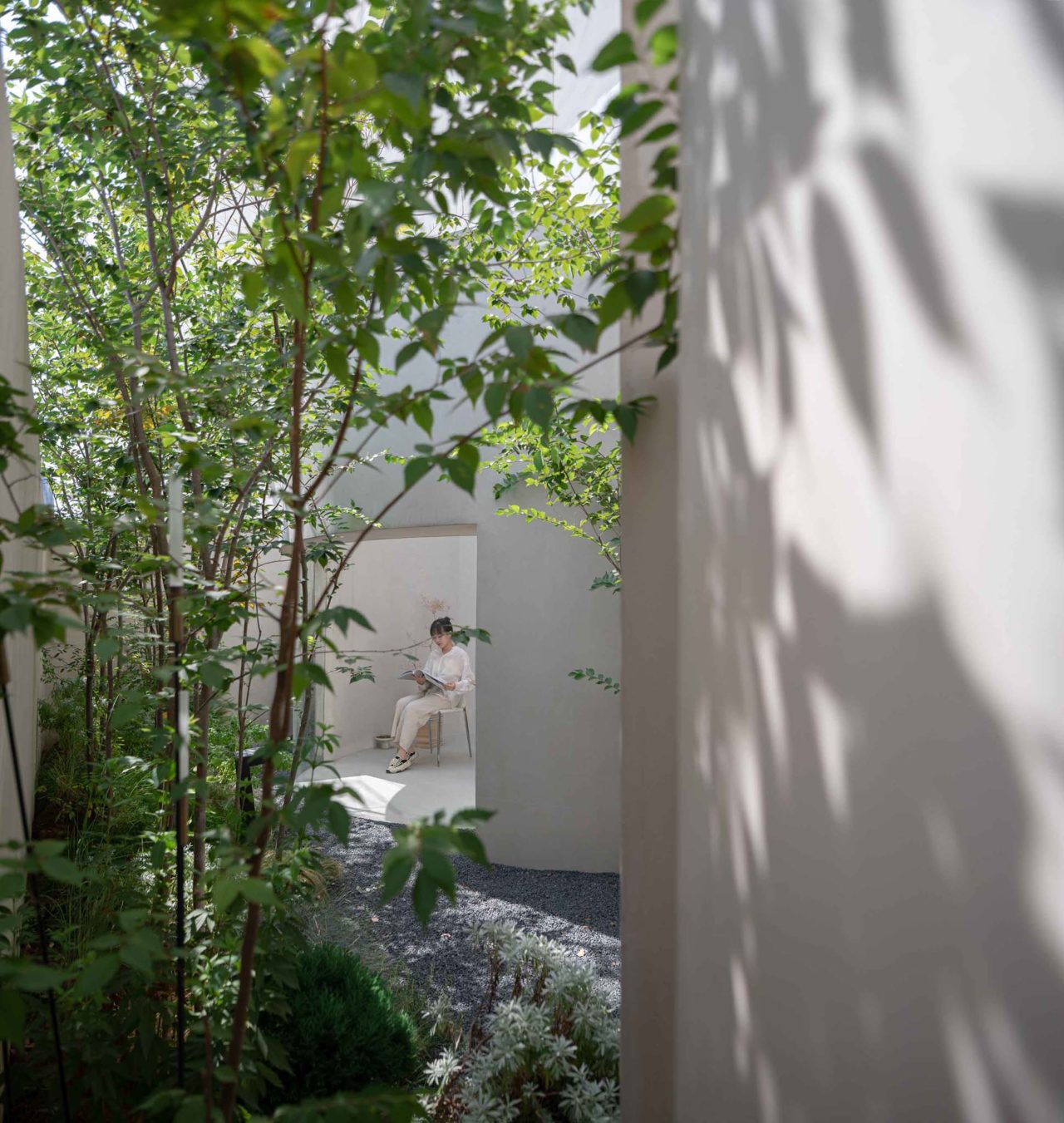
The project description is provided by the architects.
About the Architects

HAS design and research is an architecture studio established in Bangkok and Shanghai.
Hung And Songkittipakdee (HAS) explore Asia’s architectural language through a “design + research” parallel approach; it emphasizes the analogy of nature and man-made nature, looking for another kind of new natural architecture through the city’s own derivatives, named “The Improvised, MANufAcTURE and Chameleon Architecture”. HAS work encompasses cultural buildings, religious architecture, installation art, exhibition design, and experimental projects; and HAS research includes the train and railway markets, the charming roadside vendors, the borderless illegal constructions under the elevated freeways, and the roundabouts of dead alleys. These interesting scenes typically exist in Asian cities, where temporary construction truly reveals how people can find a “new” nature in the reinforced concrete city.

